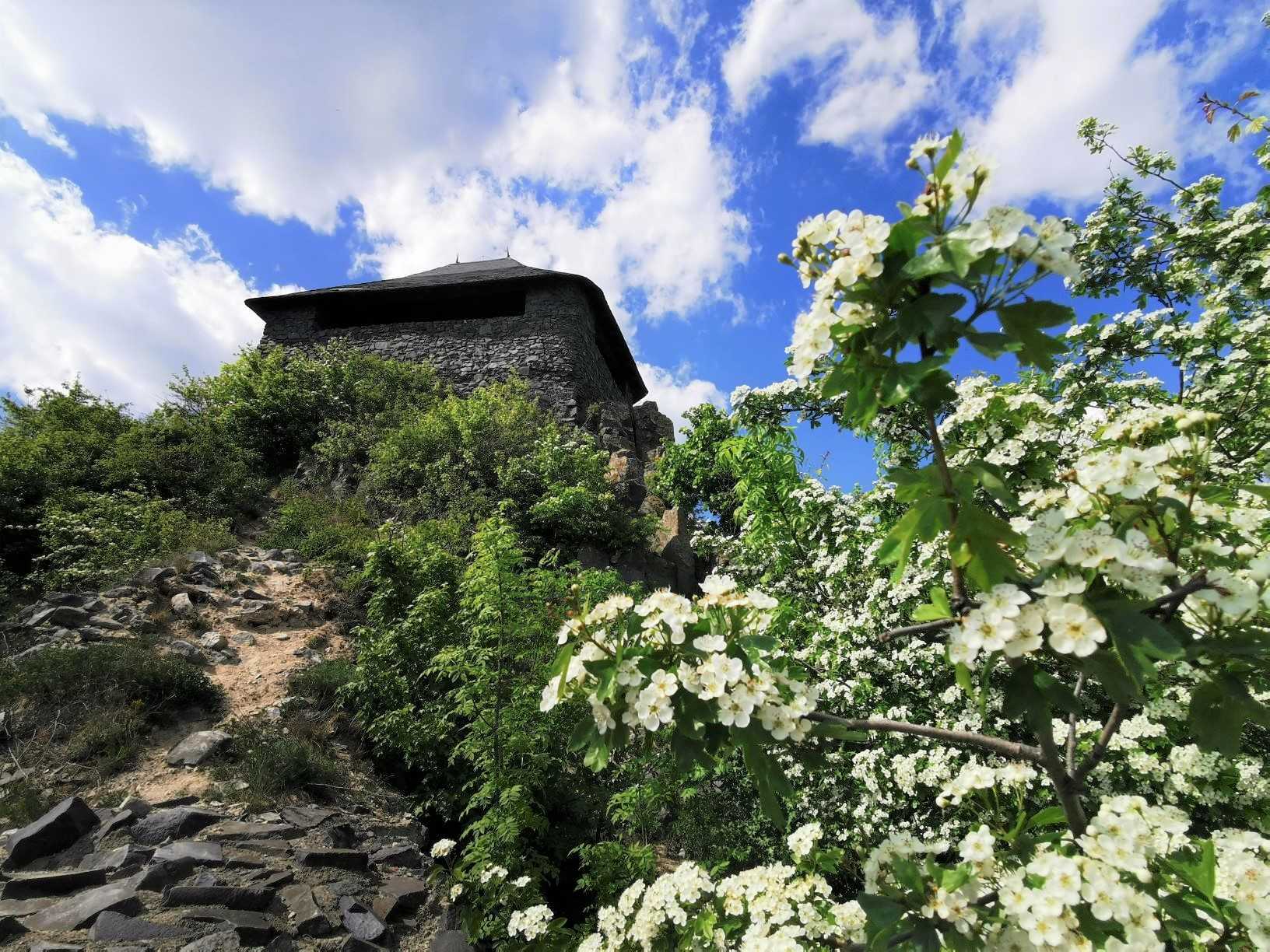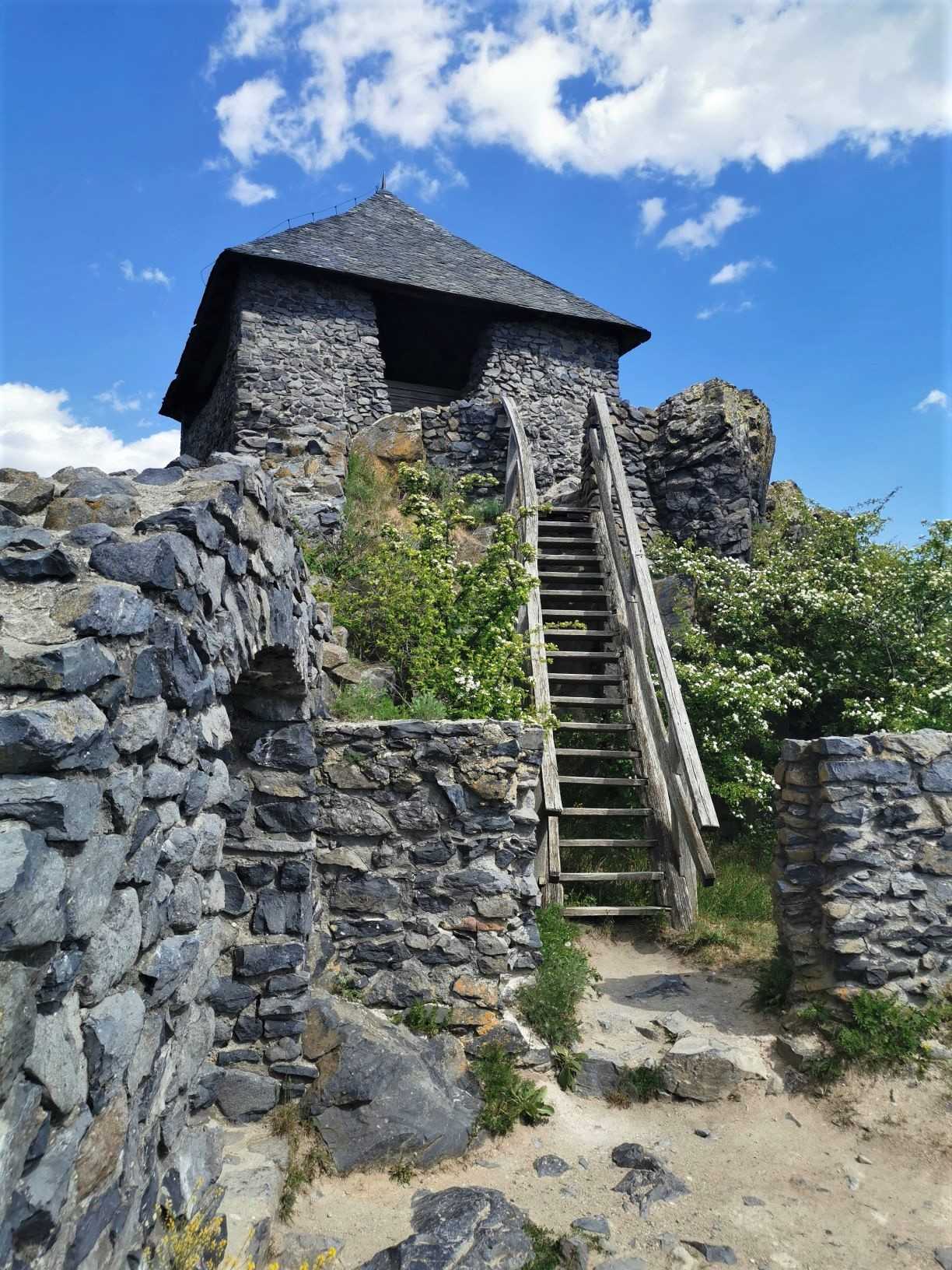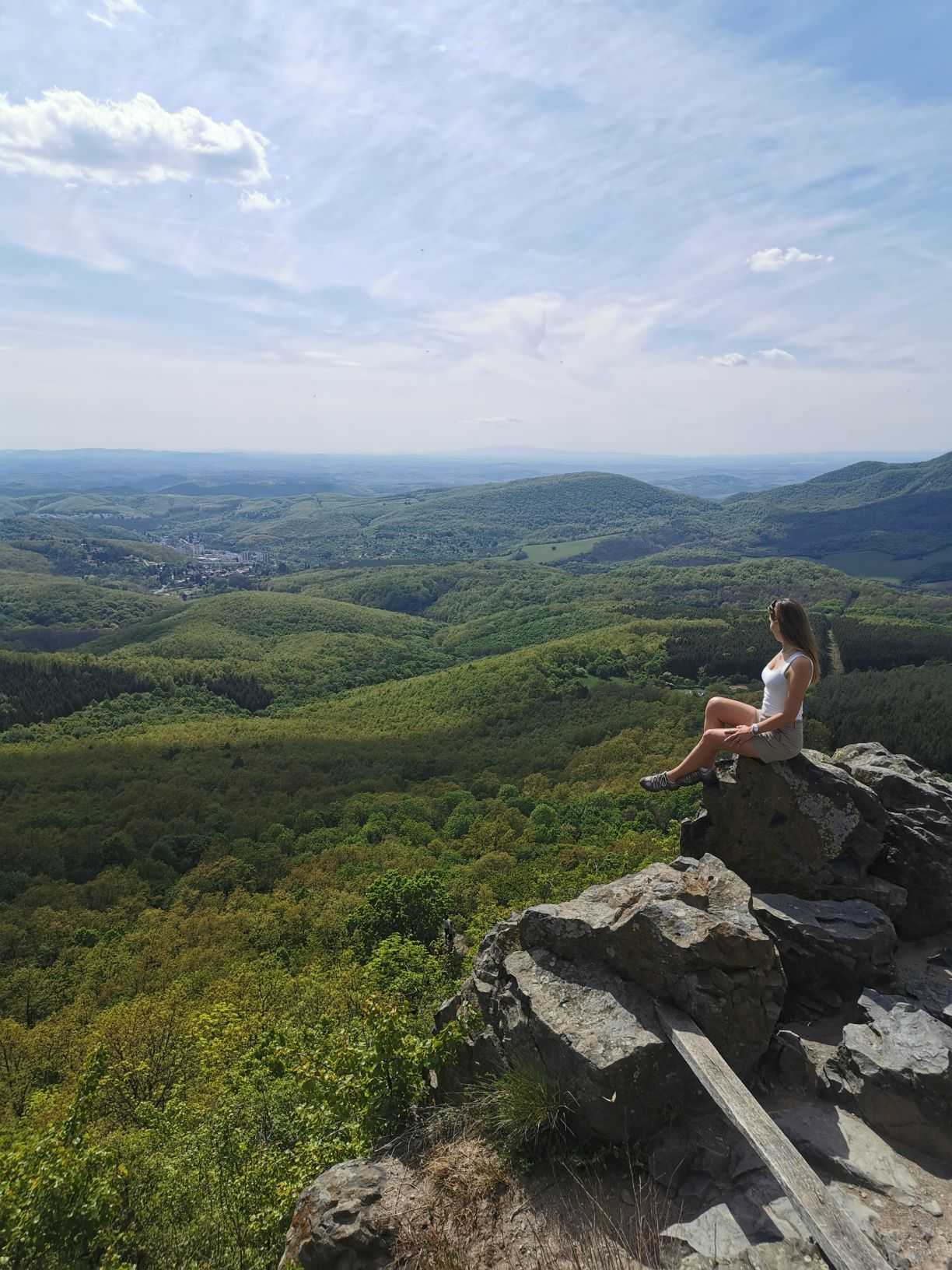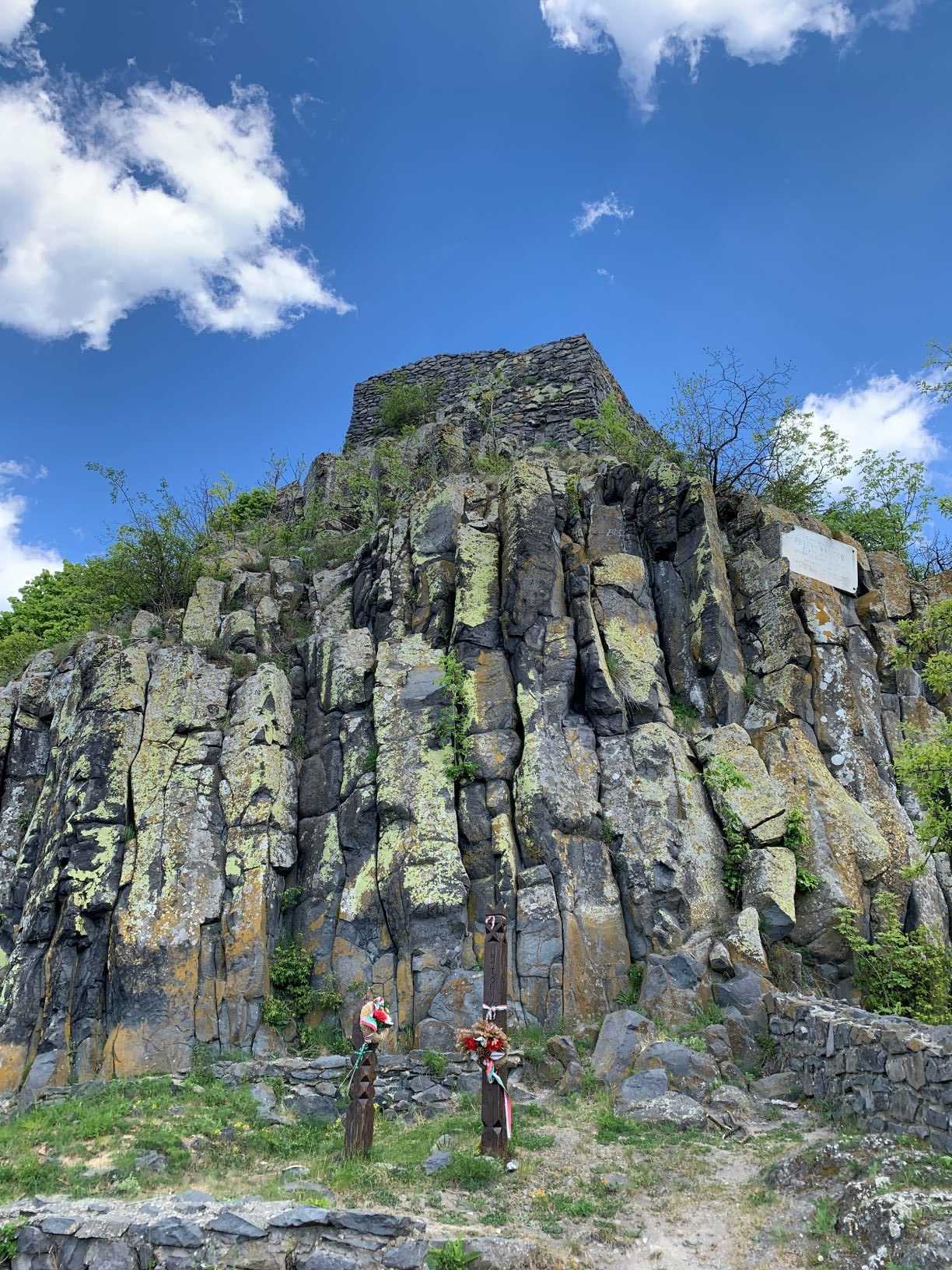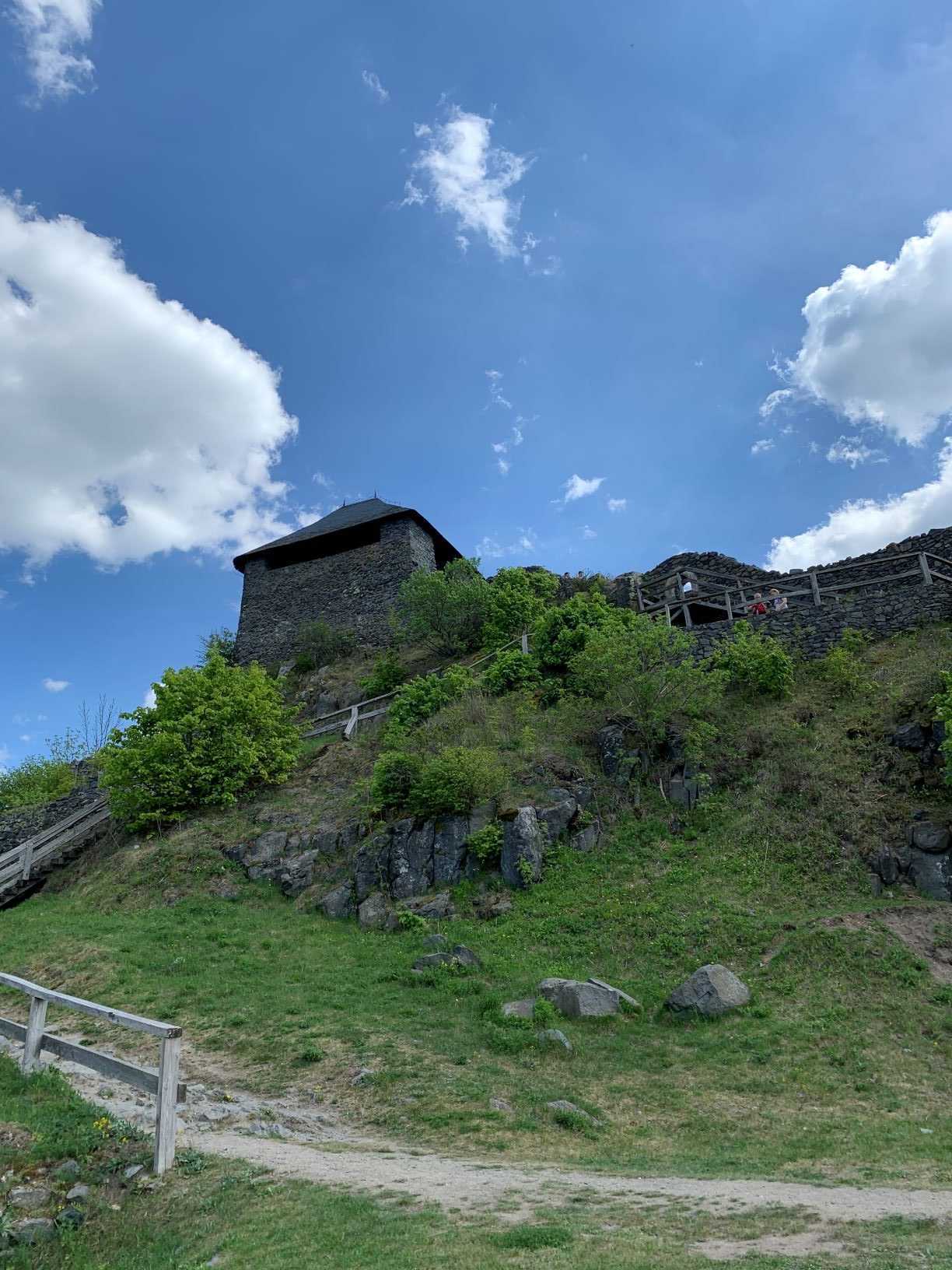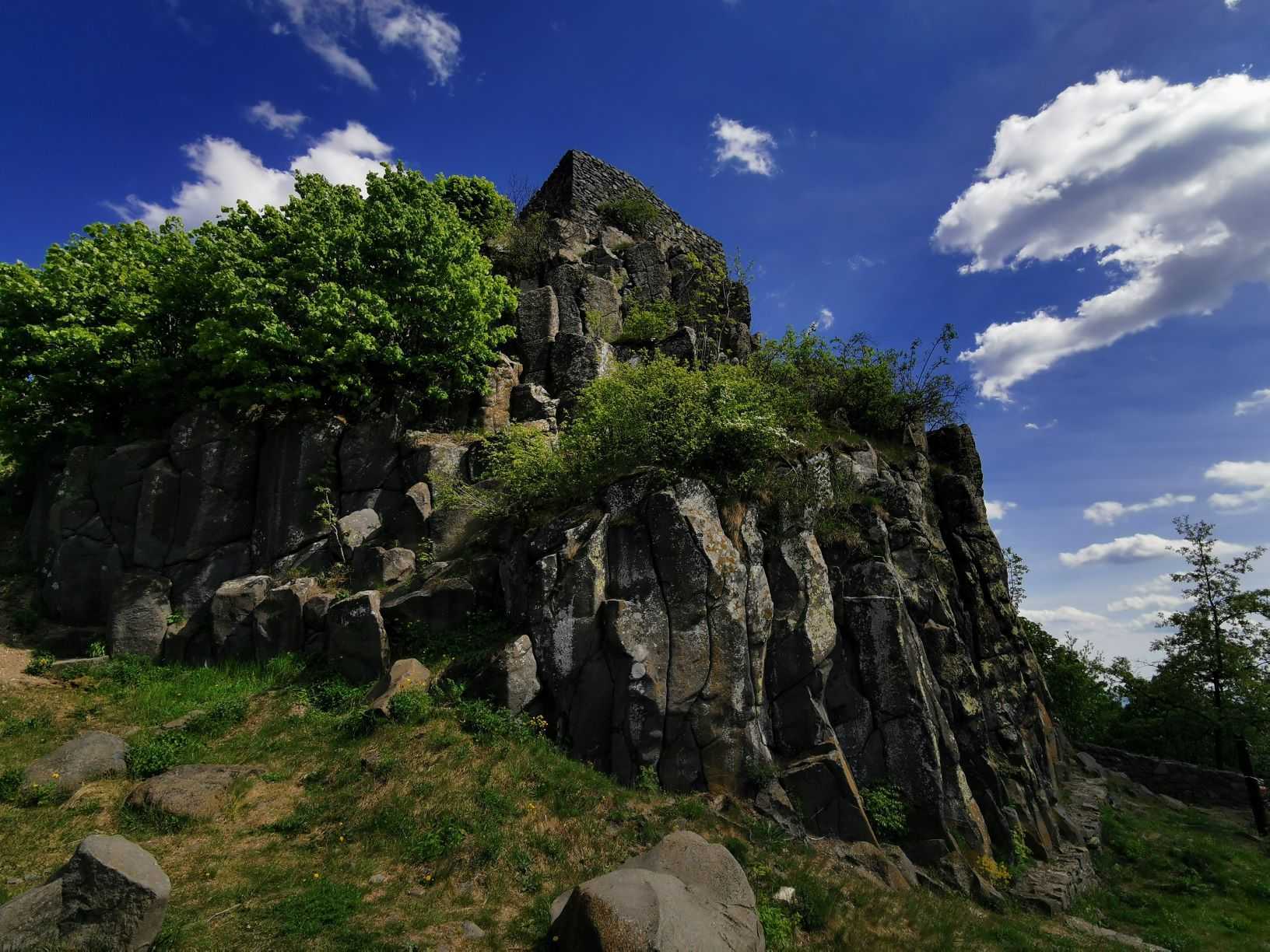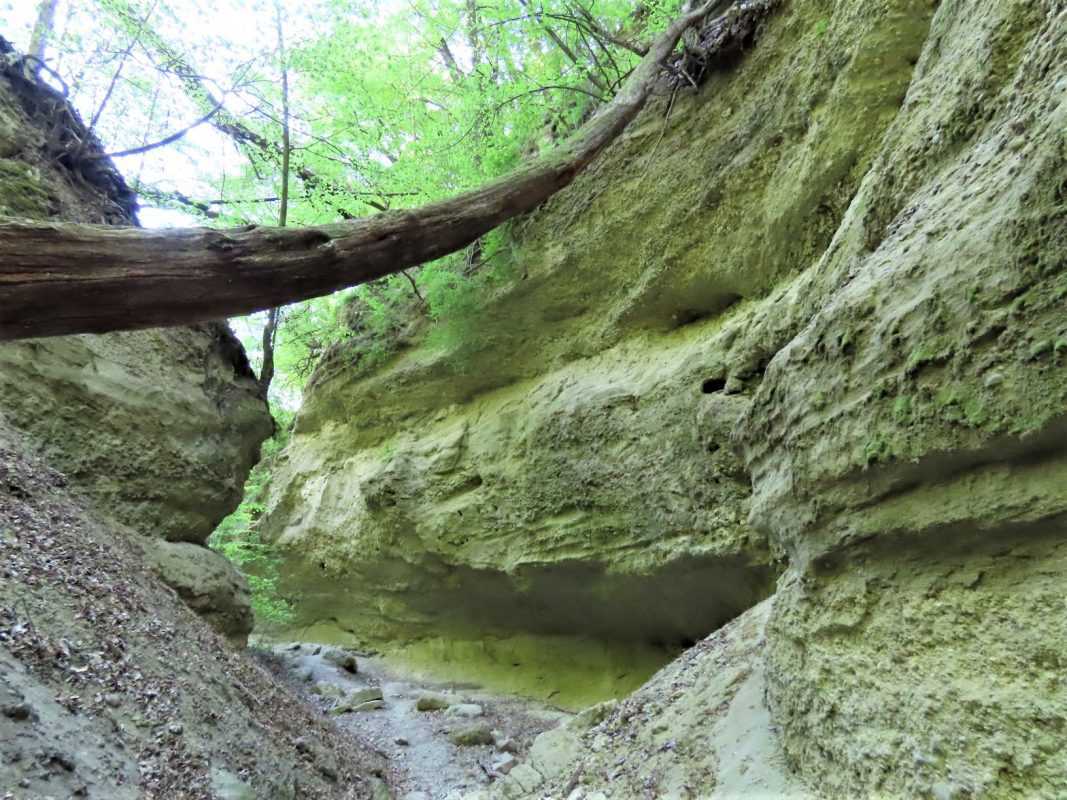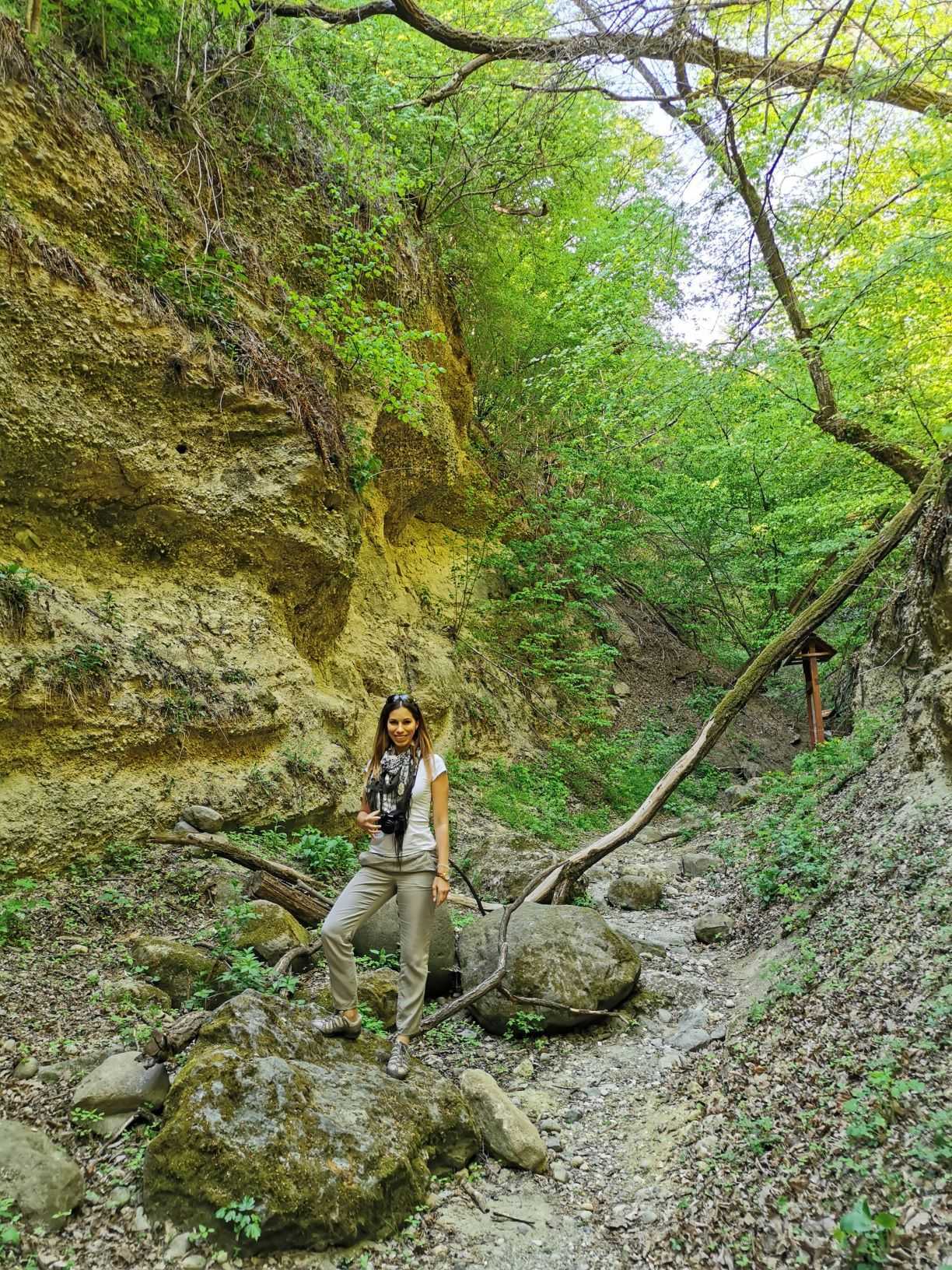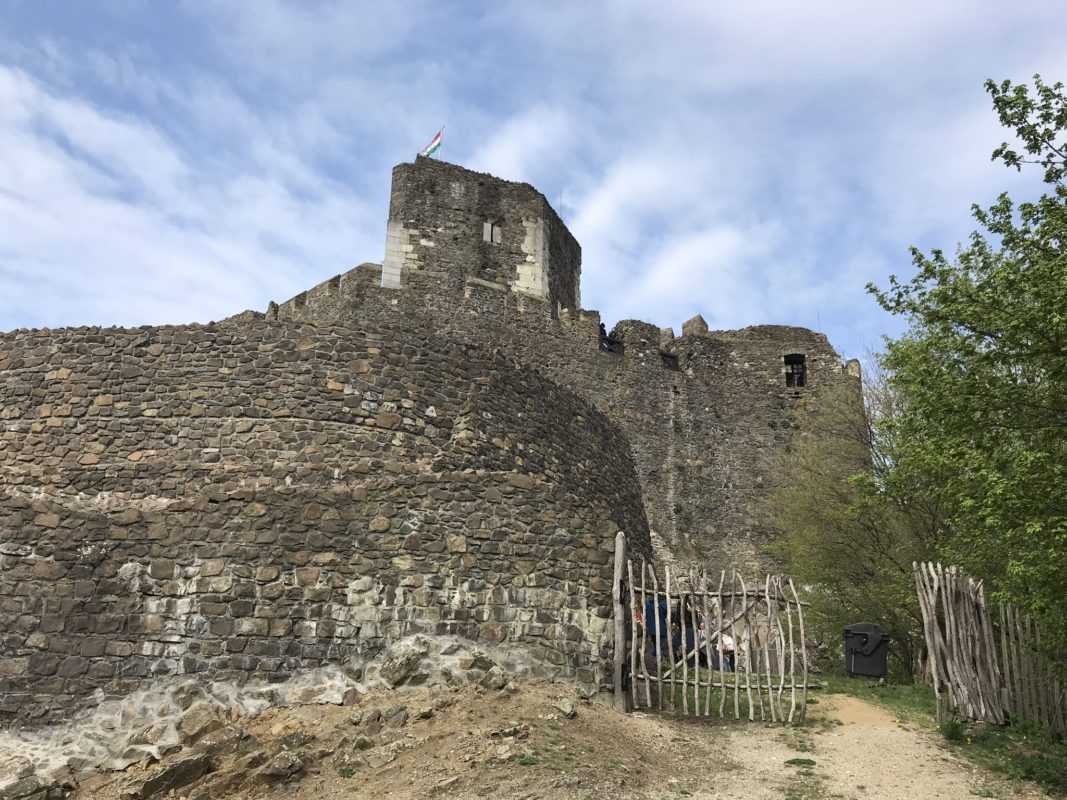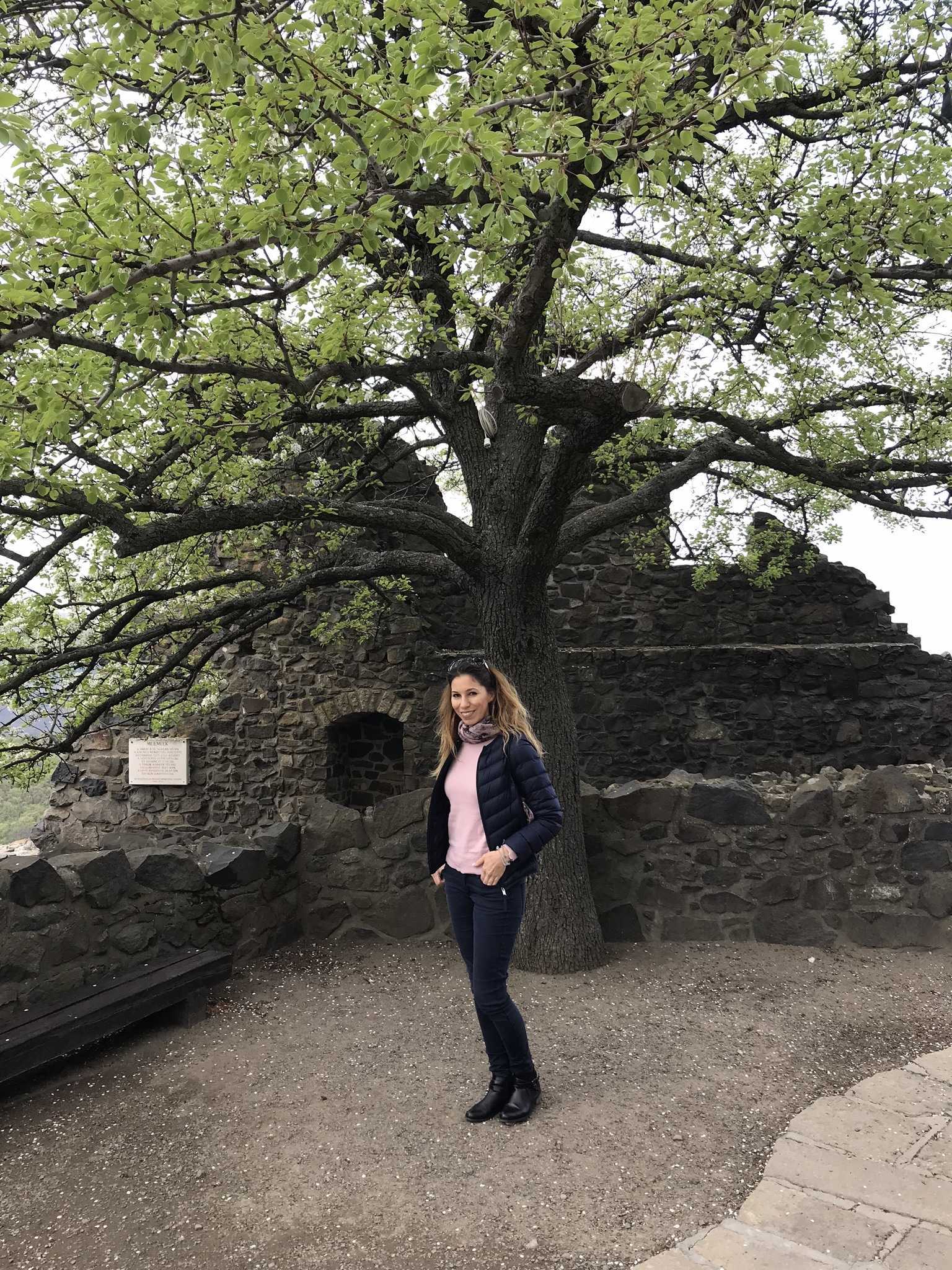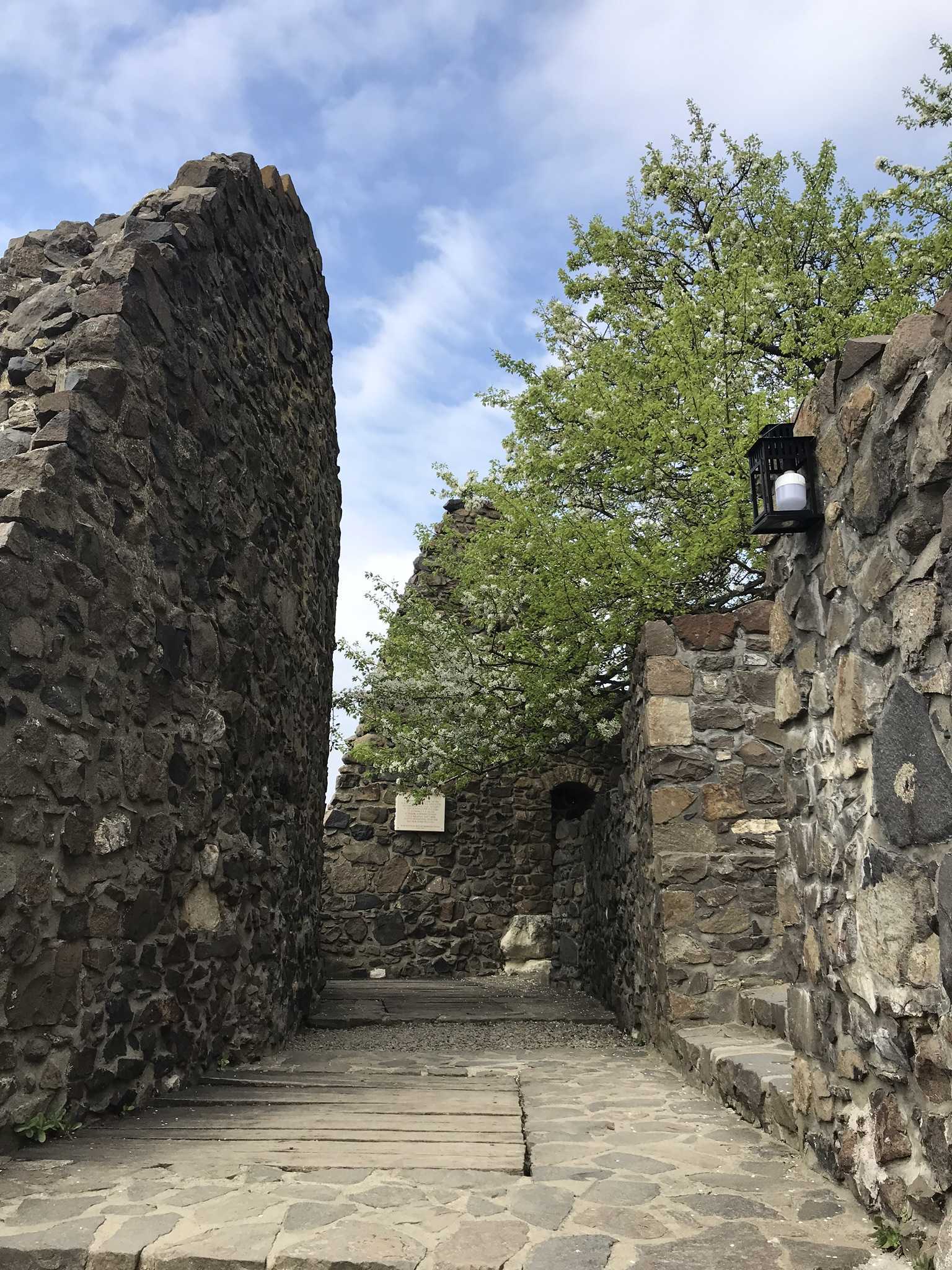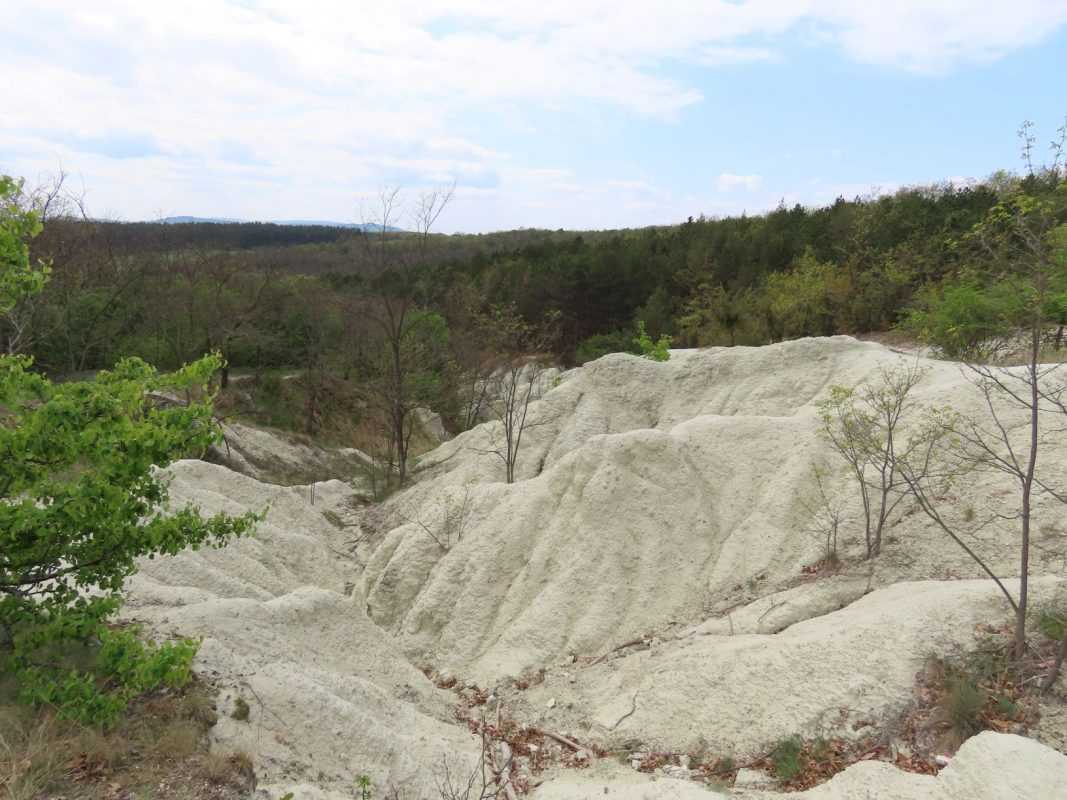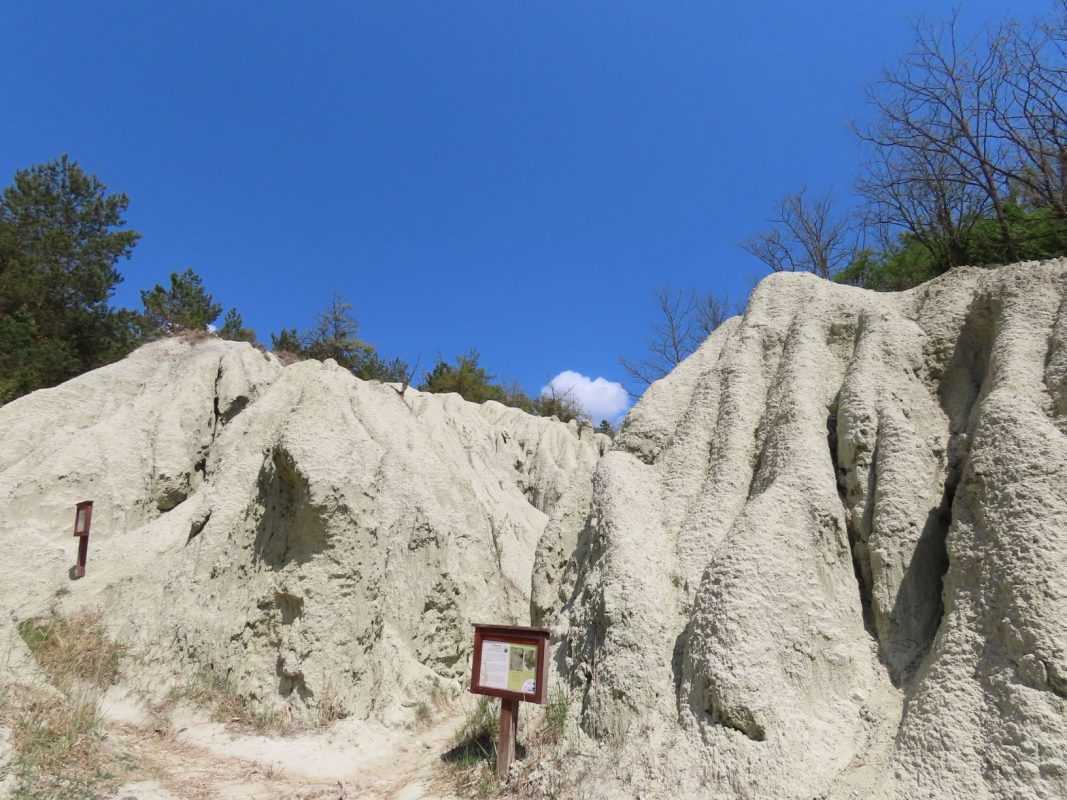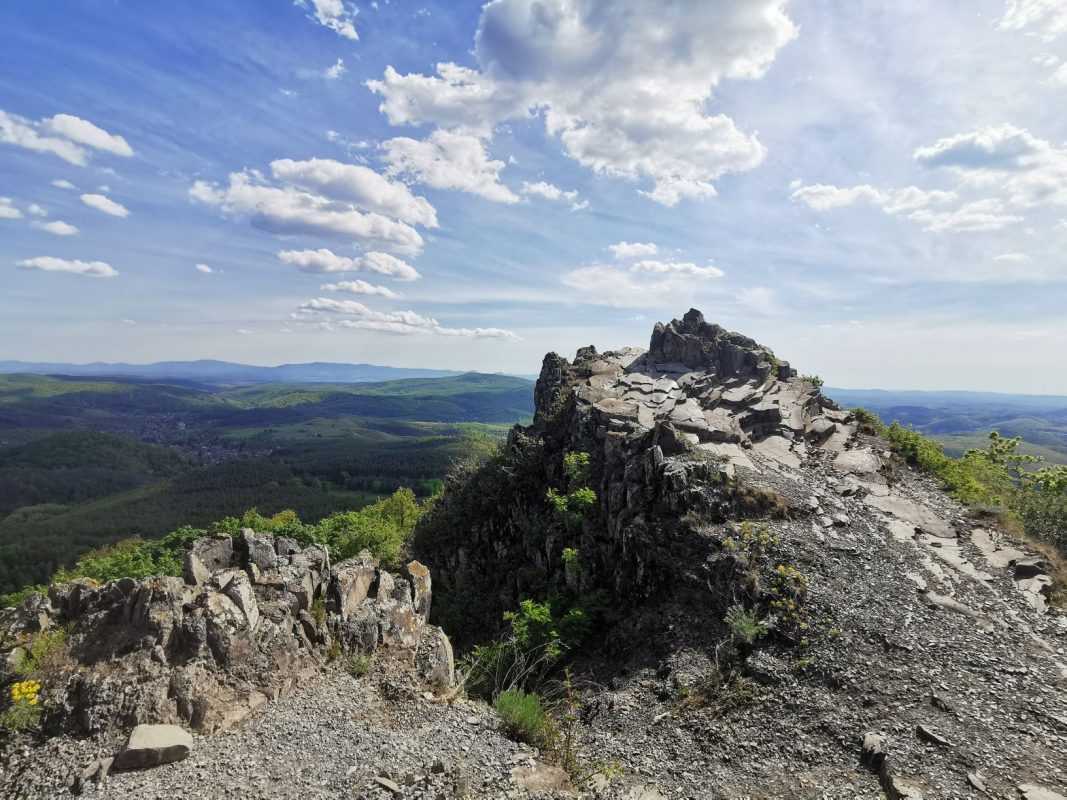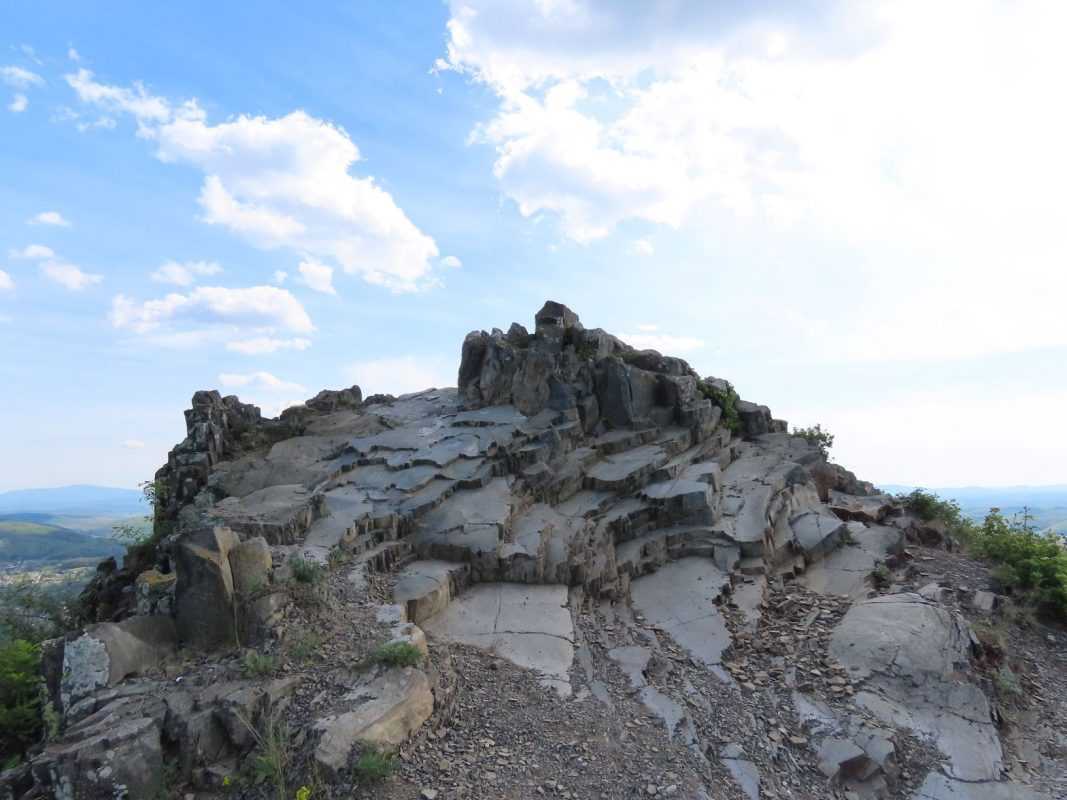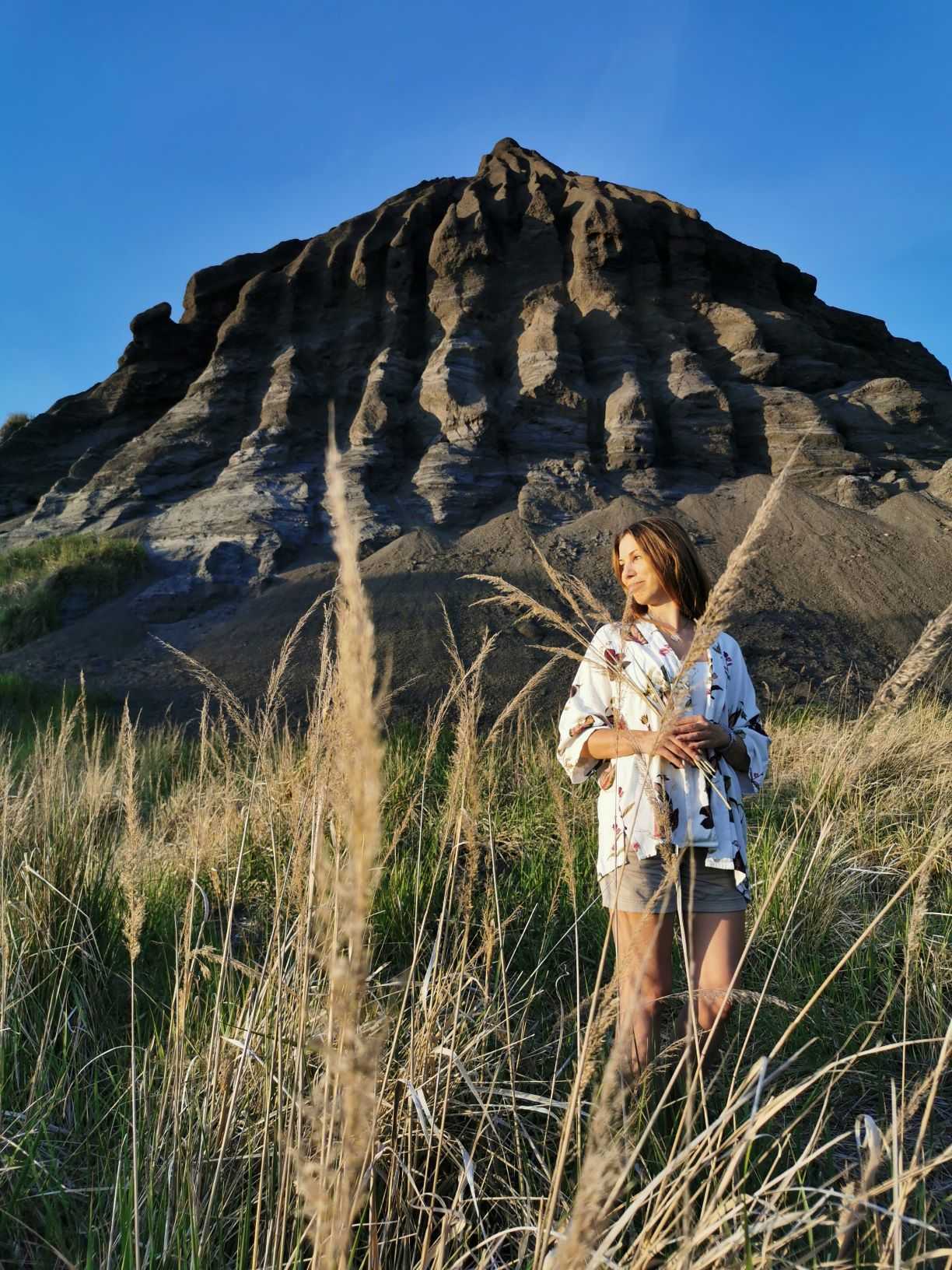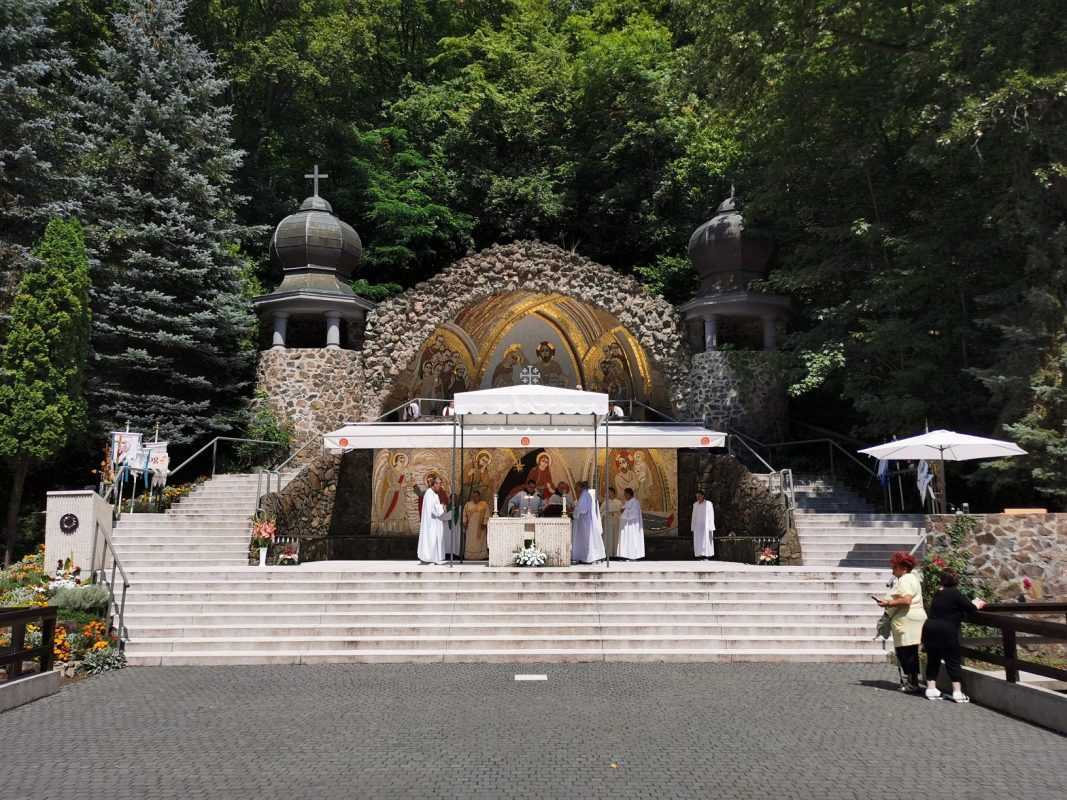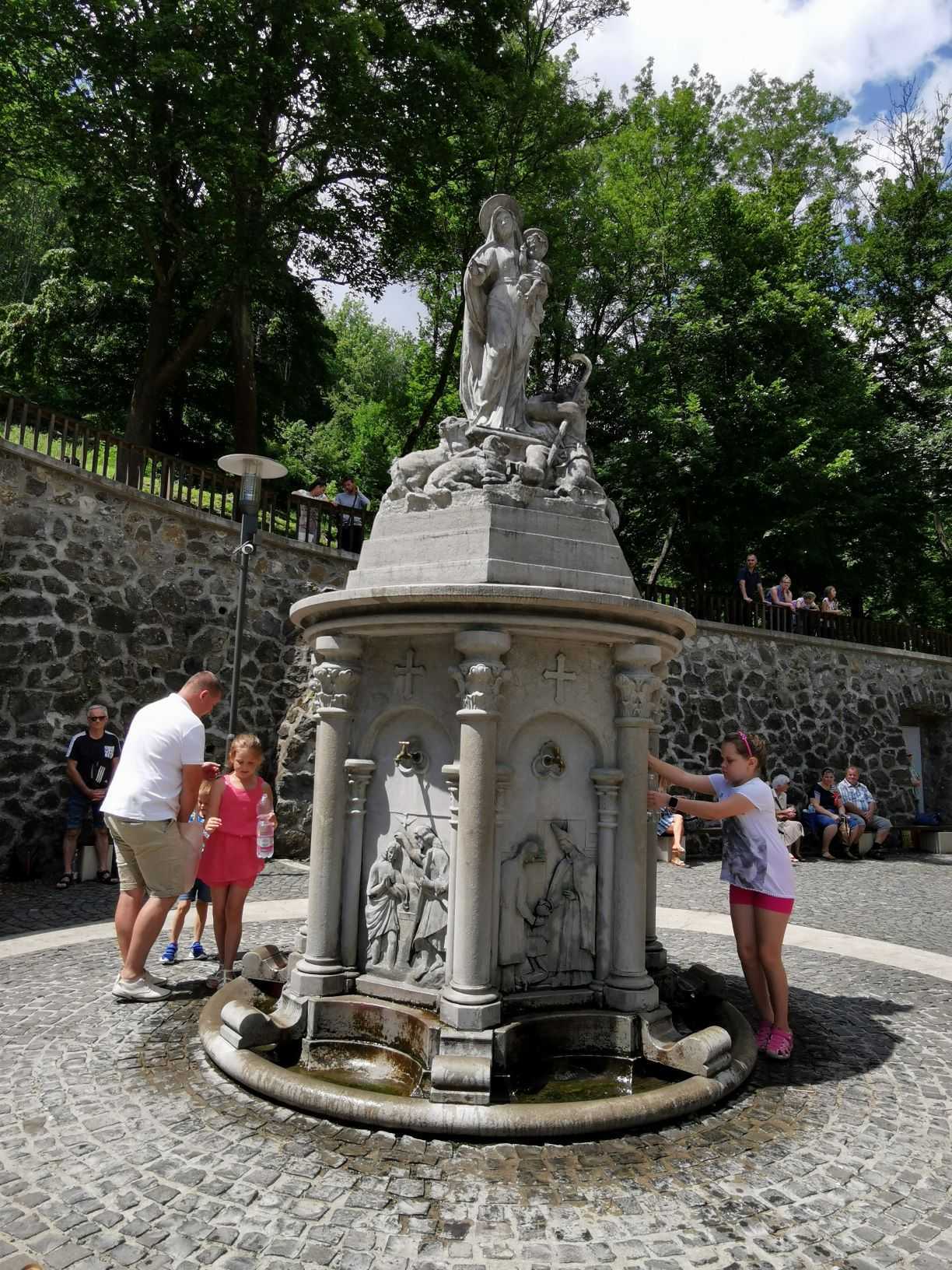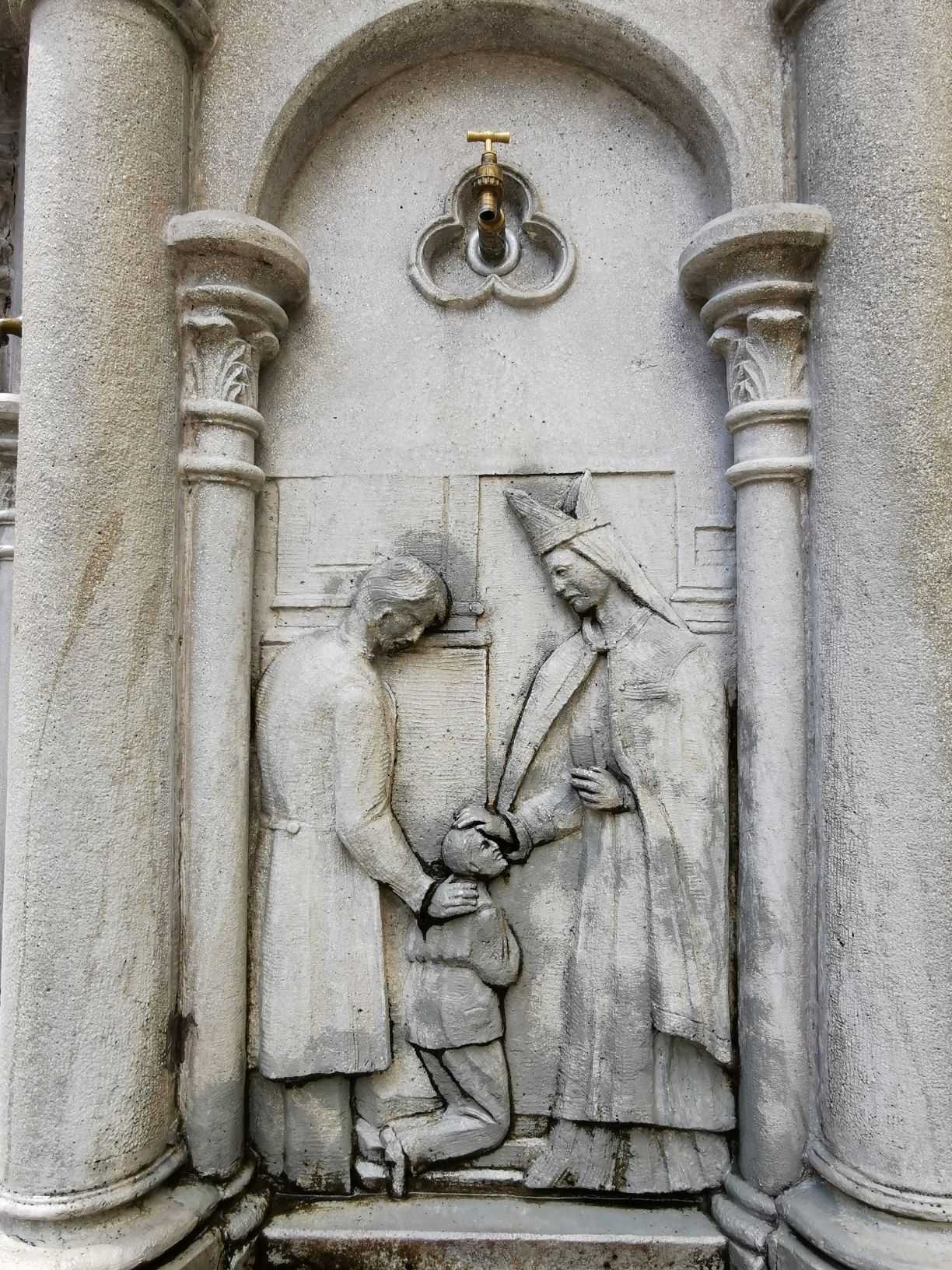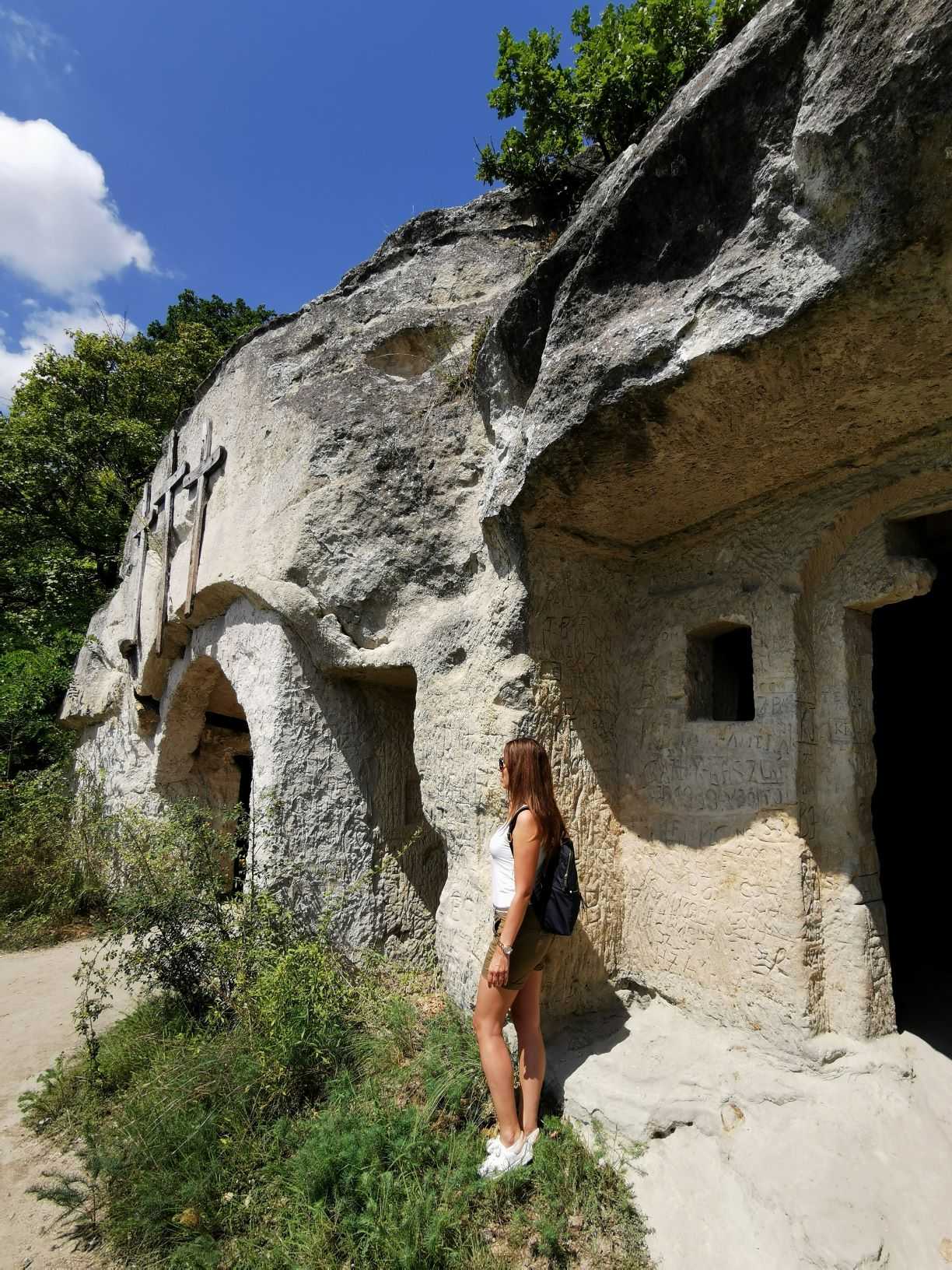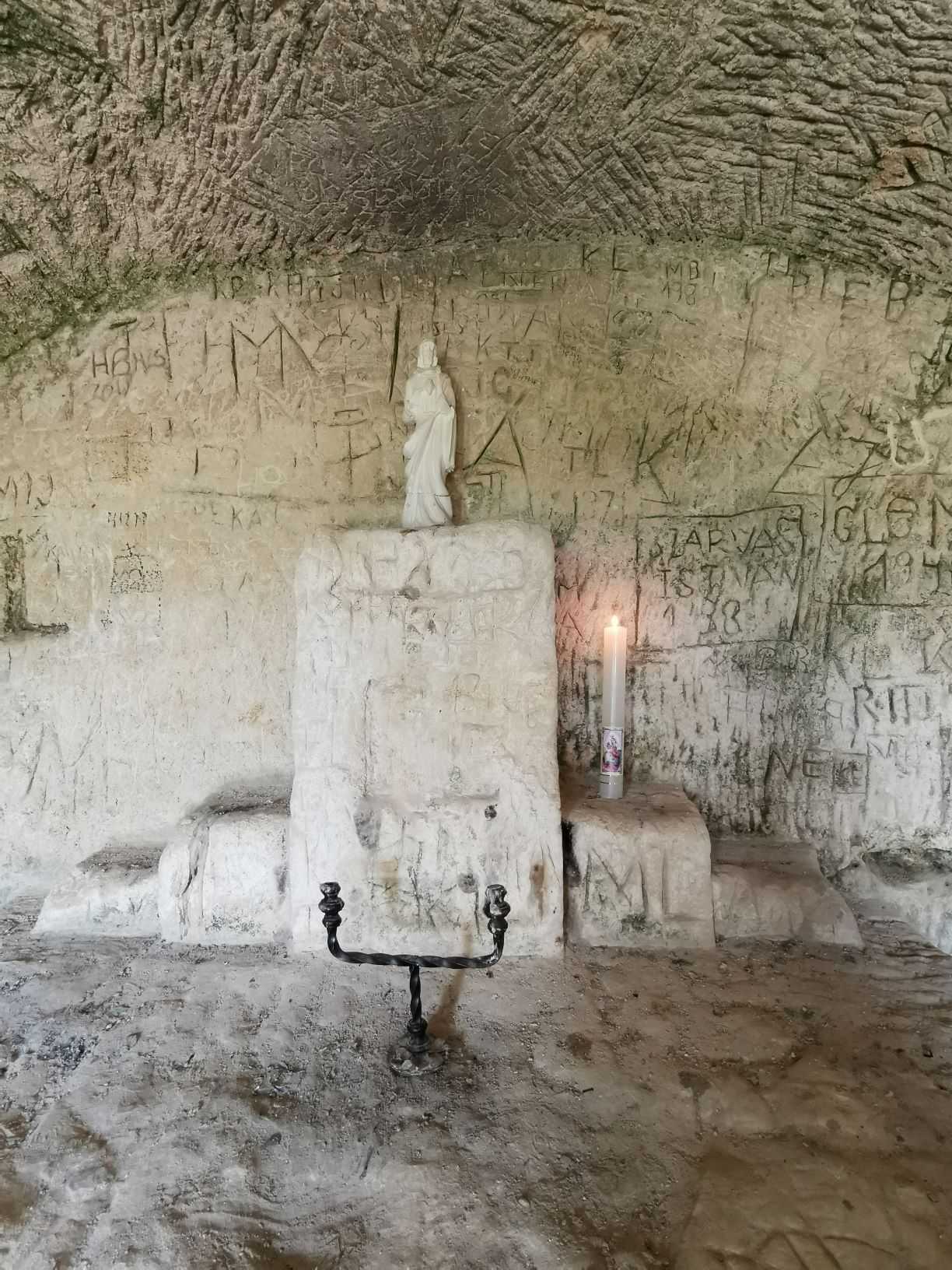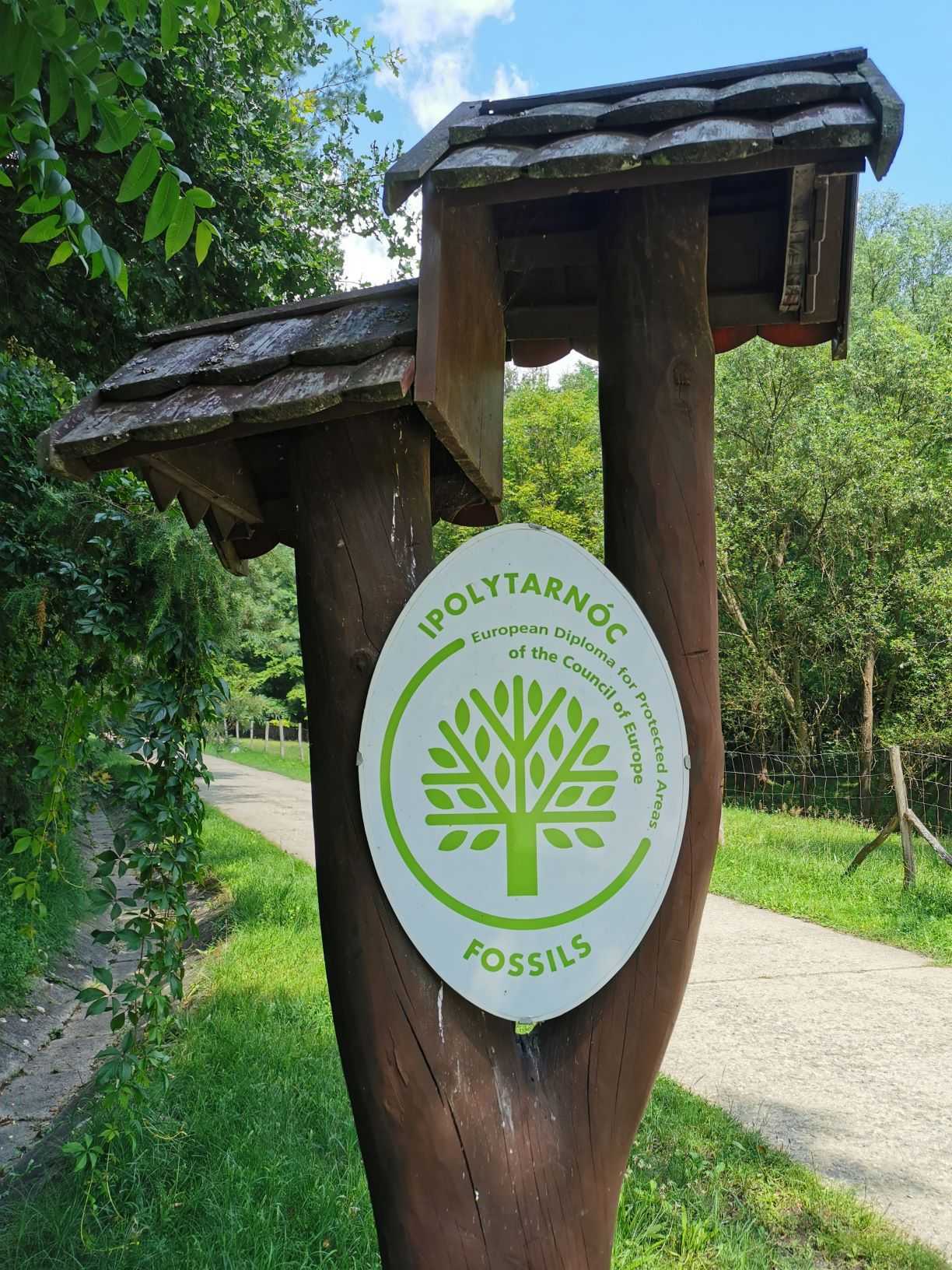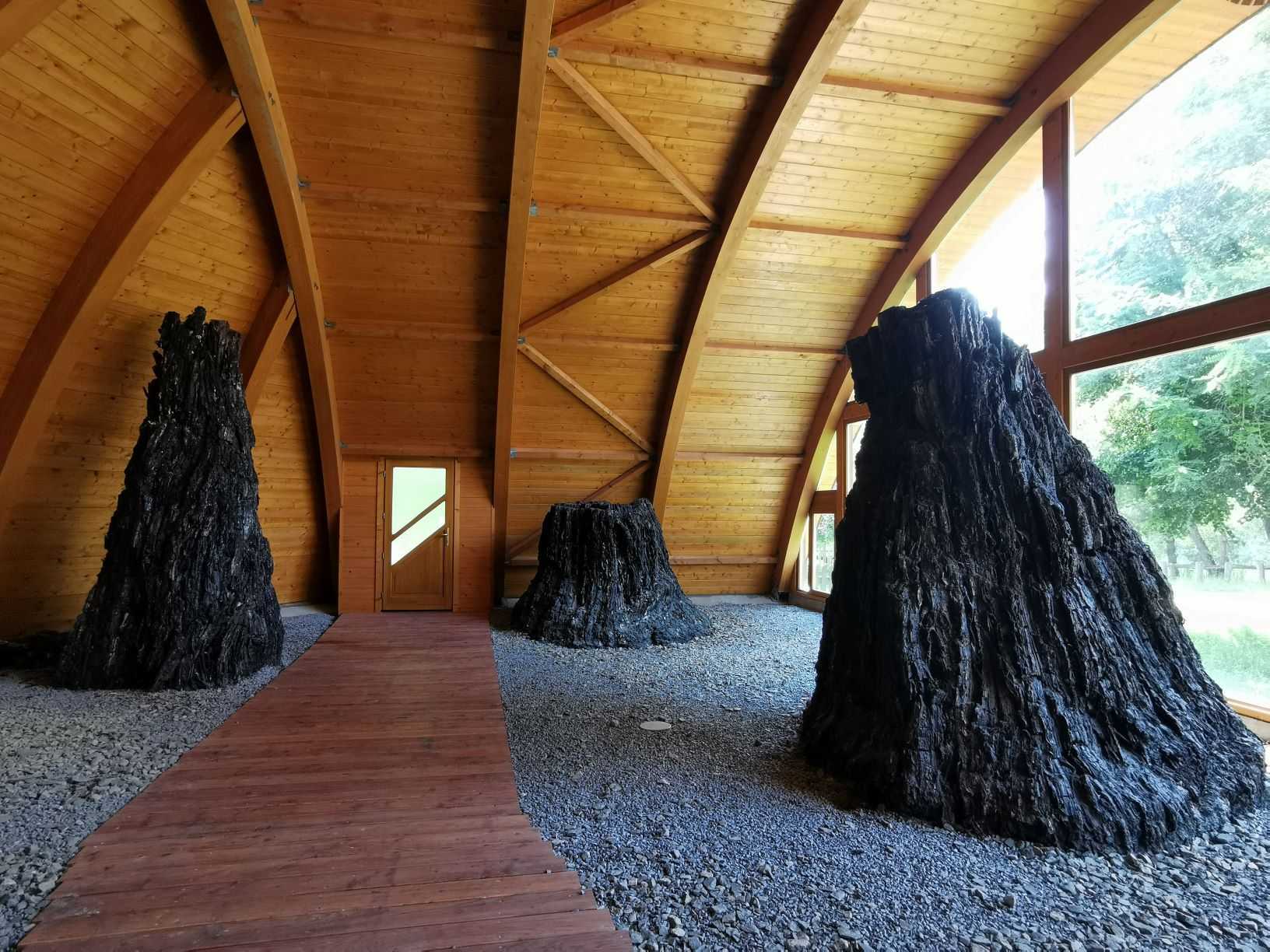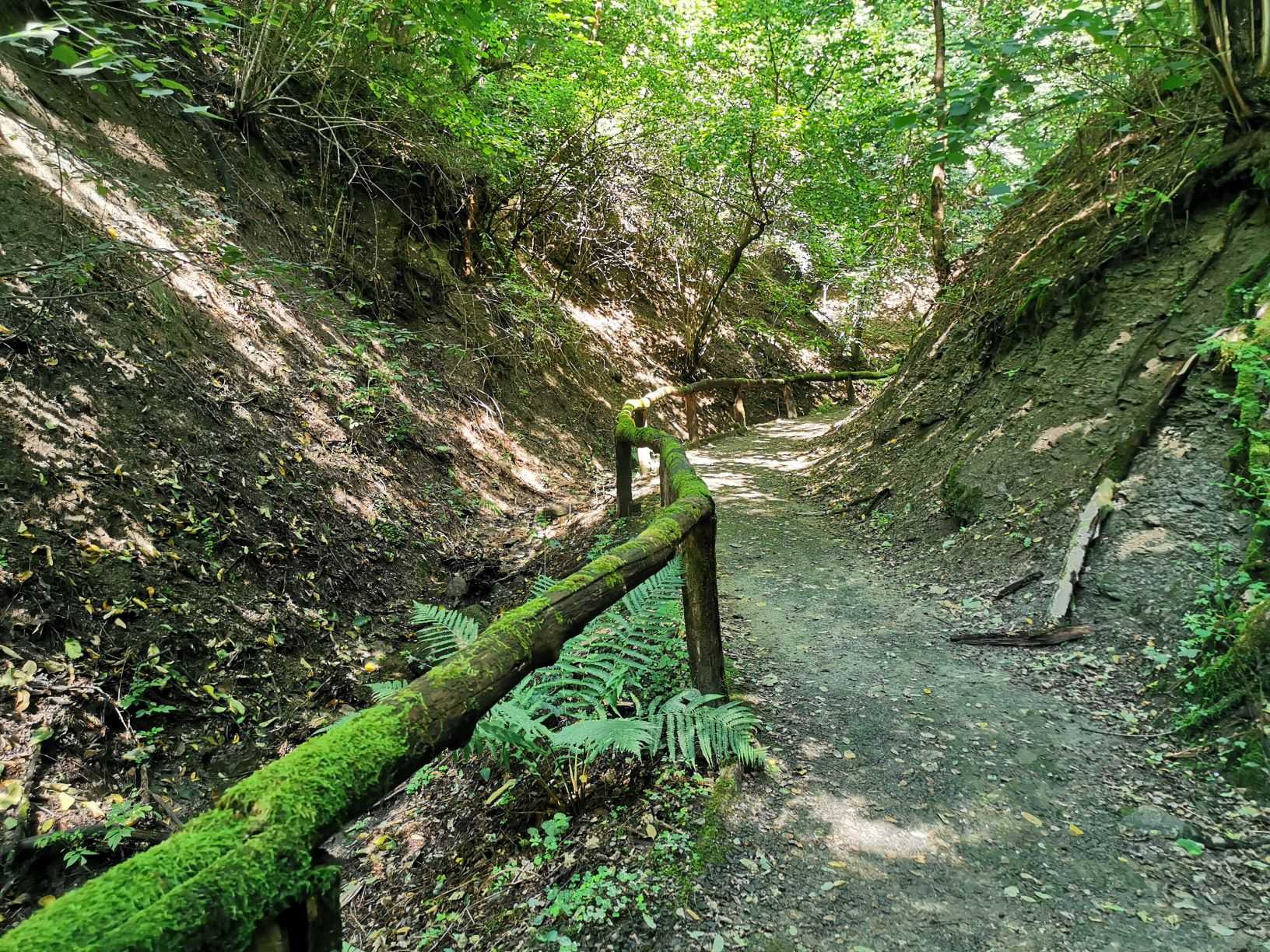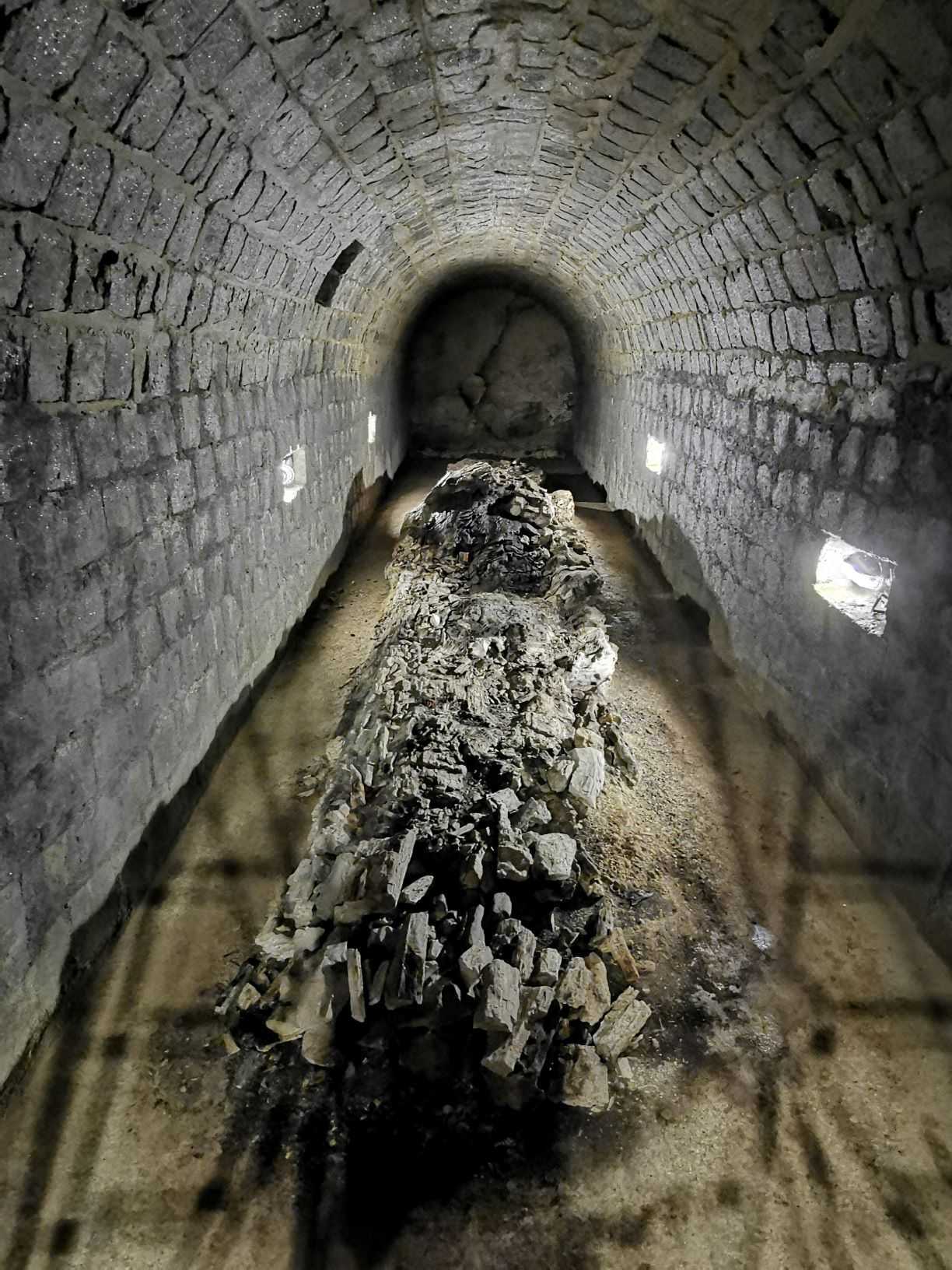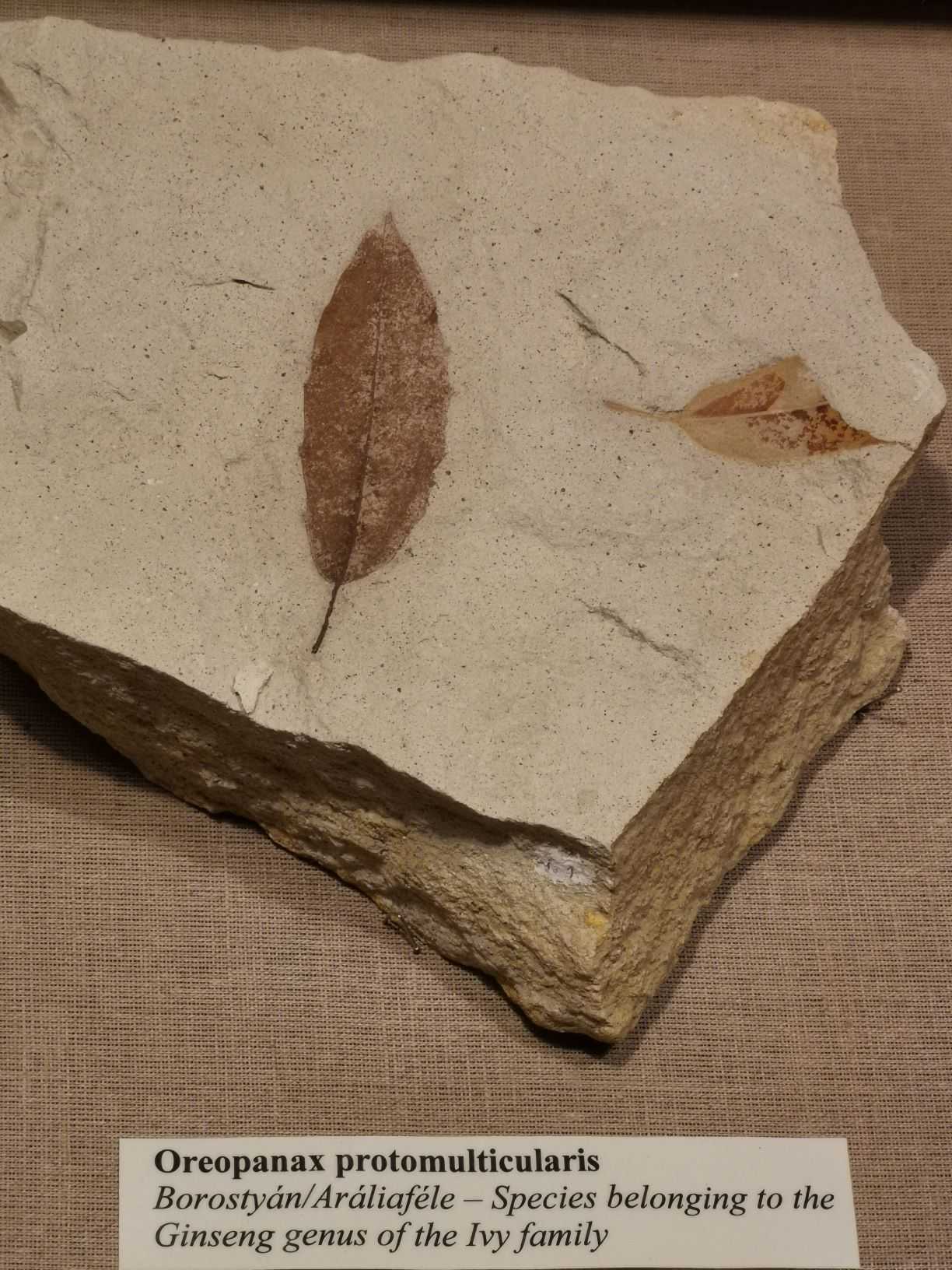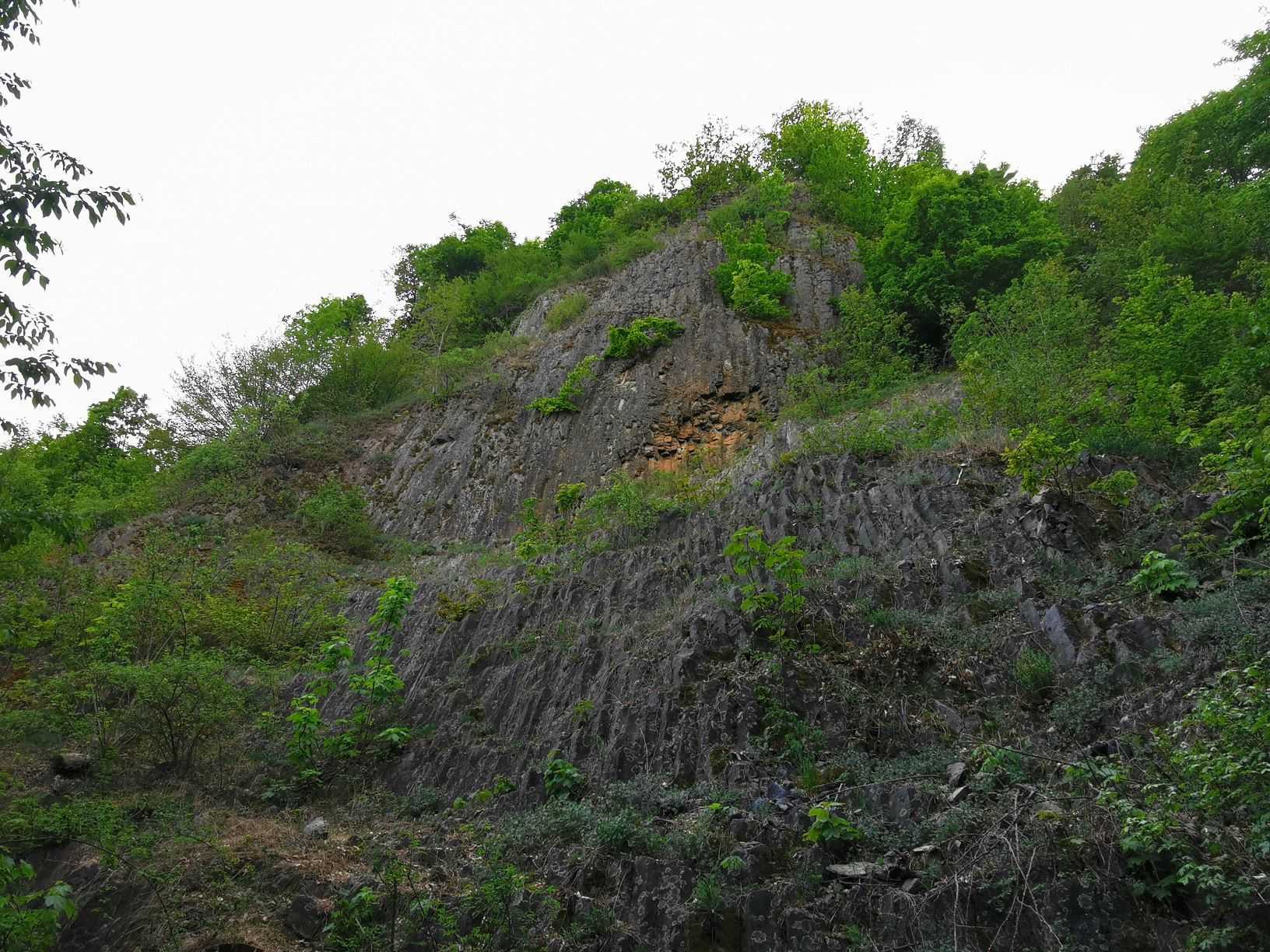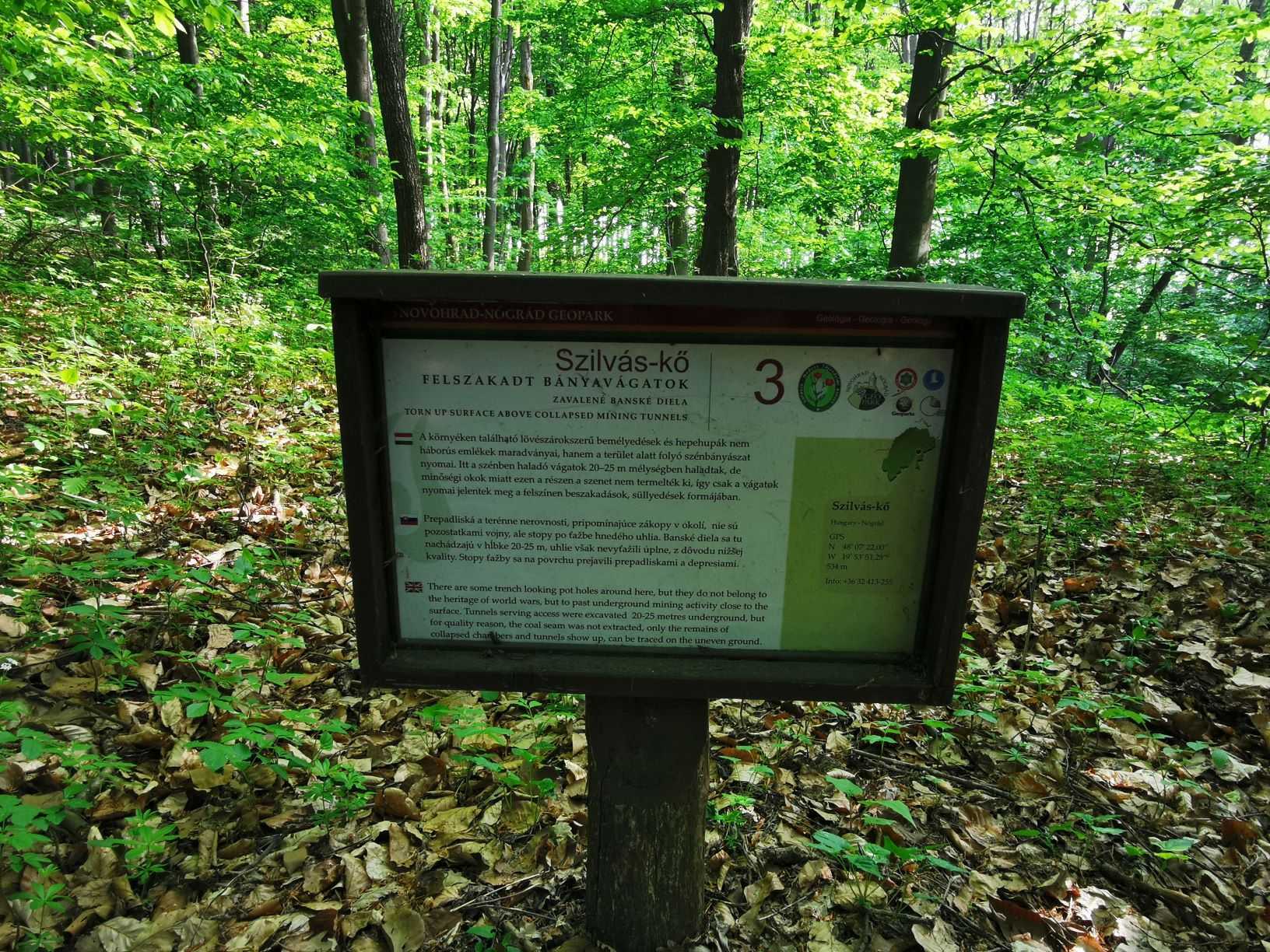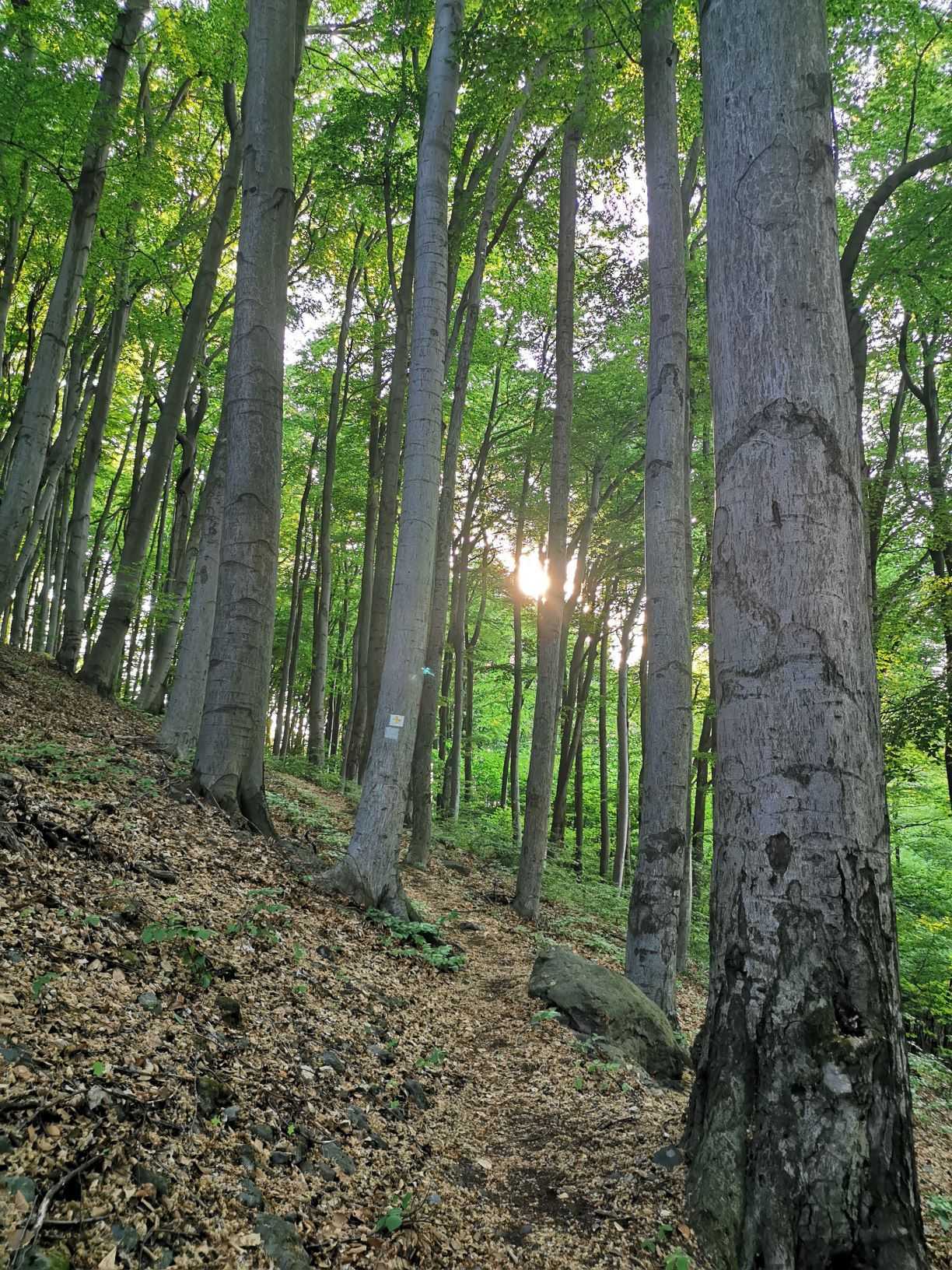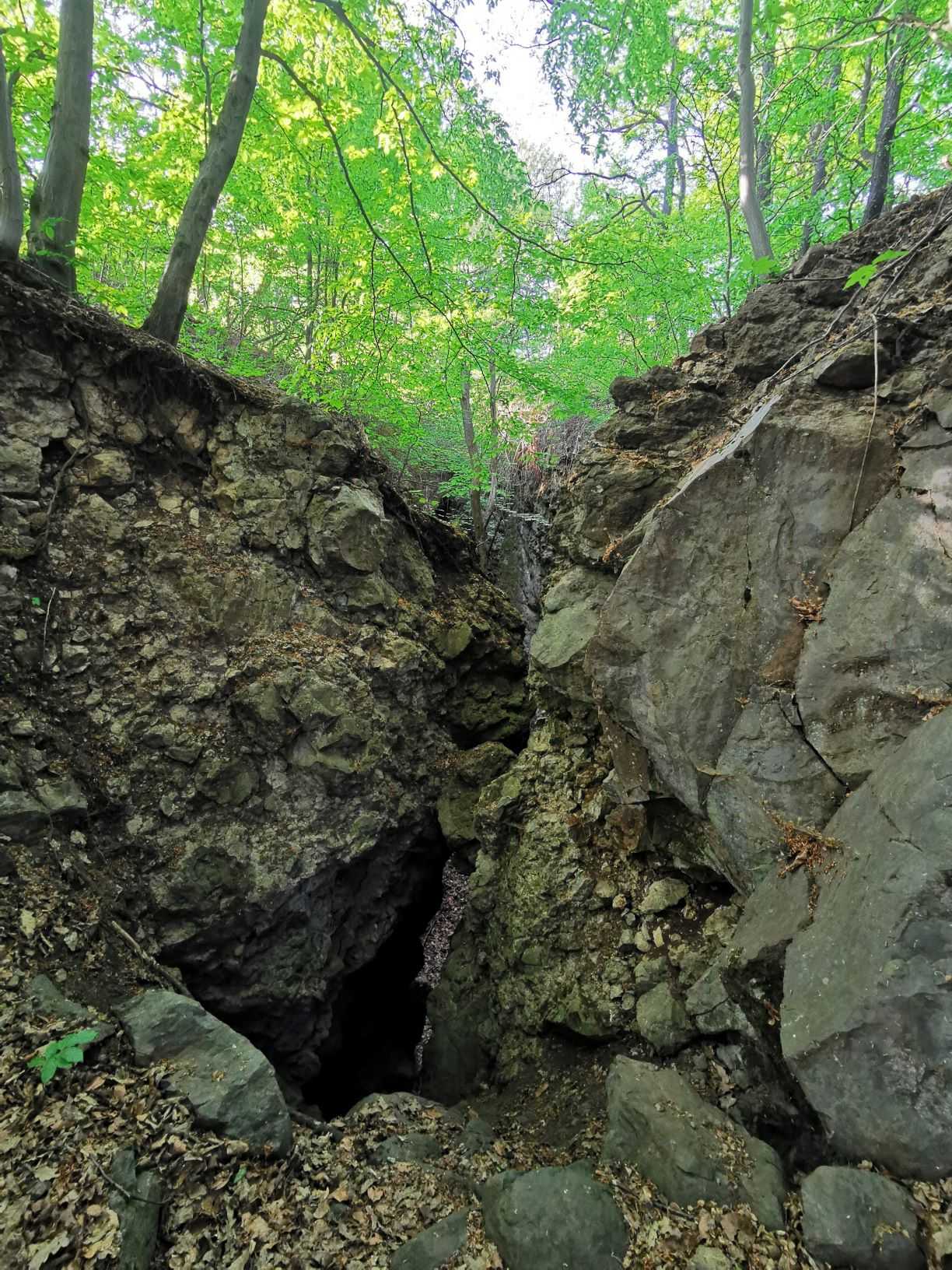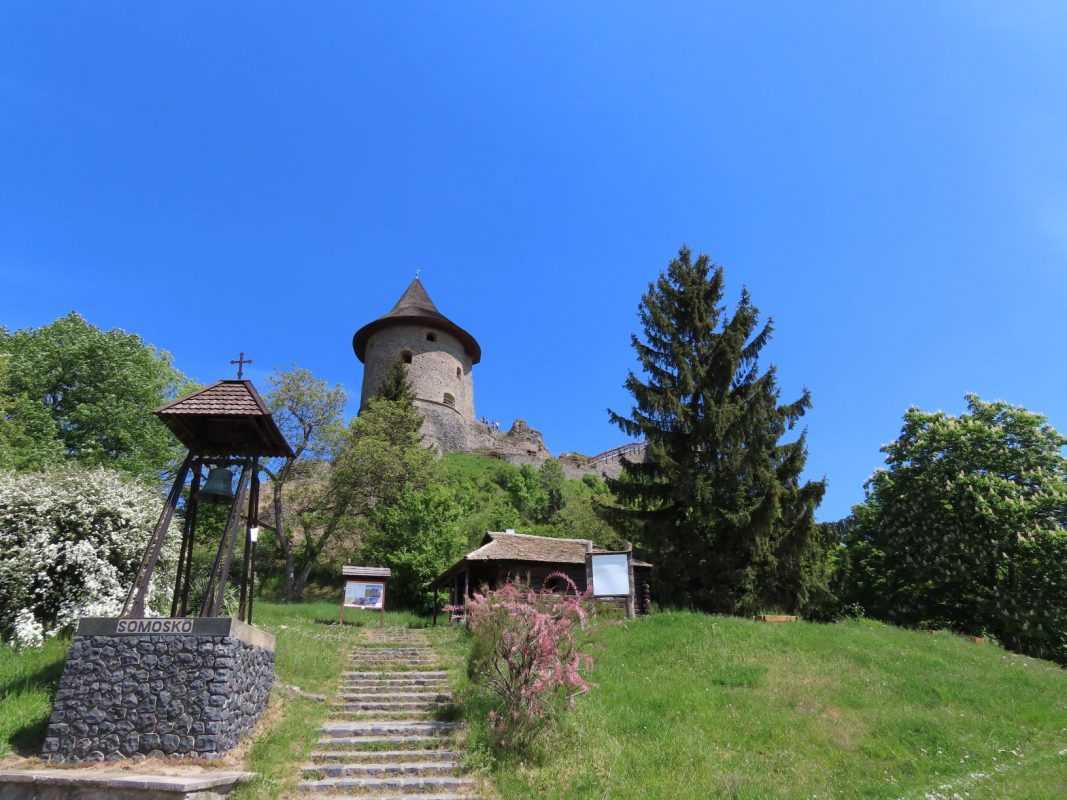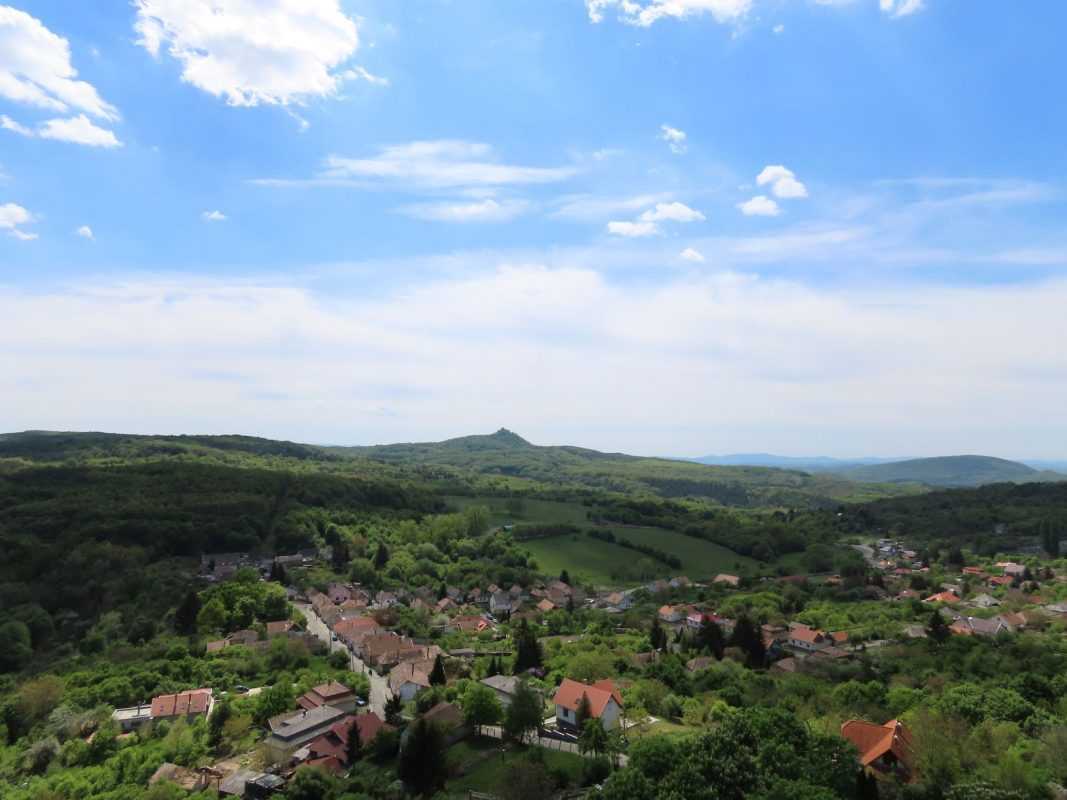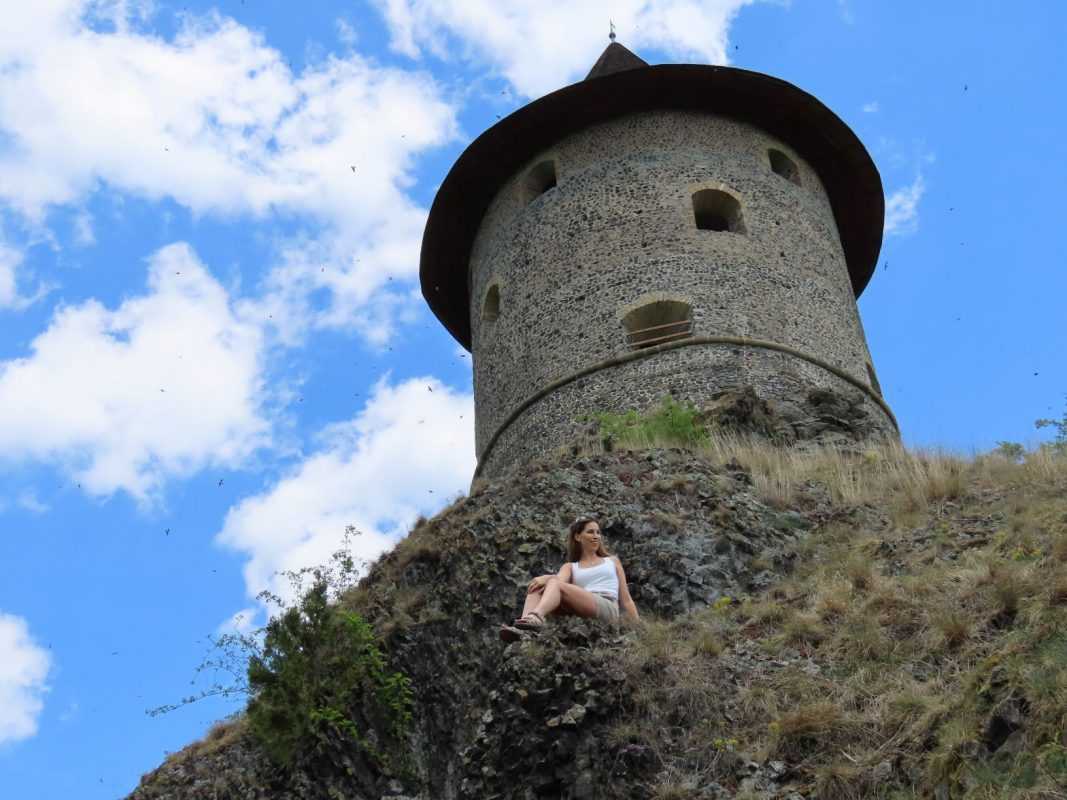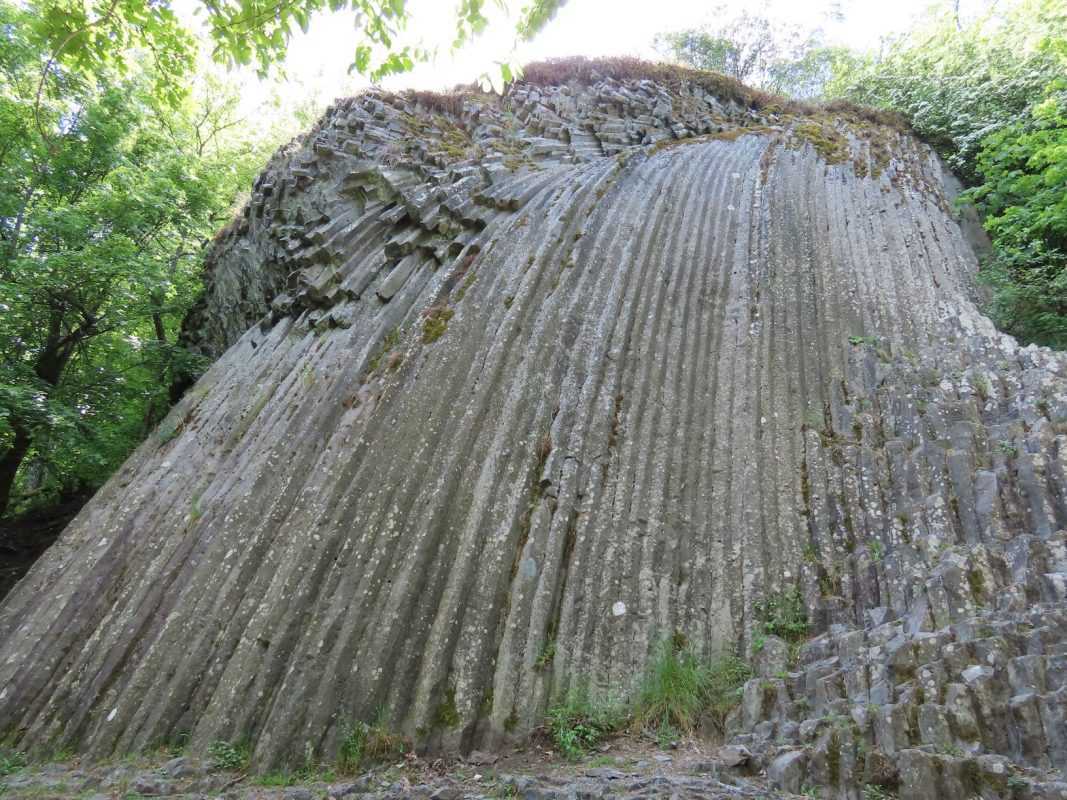When it comes to domestic trips, Nógrád County is not the first that comes into your mind. If you have to name a place from Nógrád, there is a good chance it will be Hollókő, but the rest of the county is not really on the tourist map of the country. For me, Nógrád region has been an absolute jolly joker place to visit. It can be reached relatively quickly by car, it is not far from Budapest, so on weekends, I always roamed an unknown part of the Nógrád countryside. From all the small visits, a big picture and a colorful palette were finally put together, from which I have just selected 10 places I think are worth ticking off from our domestic bucket list. Of course, the list can be expanded with additional elements, since I have not seen everything in Nógrád County either. But from what I have seen, these 10 places were especially close to my heart.
Salgó Castle
One of the best-known basalt peaks in the Medves region is the 625-metre Salgo mountain, at the top of which the Castle of Salgo rises. The written sources first mentioned the place in 1341 in connection with the Kacsics family. The complete construction of the fortress consisting of lower and upper castles can be considered during the period of the Szapolyai family. As a matter of interest, the Salgo Castle was also briefly owned by our famous poet Bálint Balassi in the 1500s. The Turks, when they arrived at the rock castle built on the steep basalt dome in 1554, it seemed impossible to occupy it. They cracked their heads and found a tricky solution. Instead of heavy cannons, wooden beams were dragged up the mountain as a demonstration of their force.
The captain of the castle, Simon Zagyvai escaped from the castle under the night, along with the army. So it happened that the rock castle fell without a battle. Finally, in 1593, the castle was recaptured from the Turks, but it was no longer rebuilt and lost its strategic role. The ruin was visited in 1848 by Sándor Petőfi and wrote the following lines and his poem Salgo, inspired by the place: “Perhaps there wasn’t a castle in Hungary, which would have been as close to the stars as Salgo. I sat at its top for a long time: my gaze roamed for miles, my soul roamed for centuries.” The castle was partially restored in 1938 for touristic purposes and today it can be visited free of charge with a 1.5 km forest walk.
Valley of Páris River
Also known as the Palóc Grand Canyon, the valley is a nature reserve of unparalleled beauty. The origin of the name of the place is unclear, as there is no stream or permanent river in the area, the valley is completely dry for most of the year. You can walk through the gorge, where you can even see the historical ages of the earth. In the wall of the canyon, pebble, sandy sediment and in some places the layers of marl and liparite tufa can be seen well.
The first tree trunk caves of Hungary were also found in the 15-20 m deep valley, which is unique on the global level too. I searched for ancient fossils and prints of the letters that are supposed to still be here but I haven’t seen any, unfortunately. on the scene. I was looking very much at the stones and looking for traces of plant fossils, but unfortunately. Nevertheless, the trip is very nice and I recommend visiting the valley of the nonexistent stream.
Hollókő Castle
I have already written about Hollókő, the only UNESCO World Heritage protected village in Hungary in a separate post. (you can read here). However, at the level of mentioning, Hollókő cannot be left out of this summary. There is a legend about this beautiful castle. András Kacsics, the landlord of the area, once loved a beautiful girl so much that he locked her in his castle, to hide her beauty from anyone else’s eyes. Luckily, the girl’s nanny was with her and, as it turned out, she was a witch. She turned her sons into ravens every night to carry the stones of the castle and free the girl from it. This is how the ravens spread the stones and a new castle was built on Szár Mountain. Today, Hollókő Castle can be reached from the old village by a short walk, and from the top, you can enjoy a magnificent view of the slopes of Cherhát. It is also worth going through the thematic exhibition in the interiors, where visitors can get an insight into the life of the castle.
Liparite hills of Kazár
This special natural formation next to Kazar is also called the Hungarian Cappadocia. The snow-white color of the liparite is easily recognizable in the area at hundreds of 100 m2 and is the result of a large volcanic eruption 20 million years ago. Volcanic debris falling from the air once buried the soil as an avalanche and created the 10-meter-thick hills.
Today these hills look like someone played with a whipped cream bottle on the ground. The area can be visited as part of a geological nature trail but be careful where you step. The liparite is an extremely soft material and you can easily slip on it, so mind your steps. I liked the hills of Kazar extremely much, but if you want more liparite hills, it is also worth visiting the nearby Rákóczibánya.
Boszorkánykő (Witchstone)
A few minutes’ walk from Salgo Castle, there is a rock formation, also known as Little Salgo. Legends say that witches used to gather on this high basalt hill and danced here to send hexes to the villagers. According to other narratives, women proved to be witches who were knocked down from here. For me, the place seemed rather peaceful and the flat cliff offers an amazing view of Salgotarján and the surrounding valleys. If you want to slow down a little or relax, you’re in the right place on the Witchstone. And if someone wants to refresh his geological knowledge and would like to read more about the volcanic rocks of the mountain, there are many information signs on the site.
Cinder cones of Zagyvaróna
The Zagyvaróna mountains, reminiscent of Toblerone chocolate, are actually cuckoo eggs among the other places. Because they weren’t shaped by nature but by human hands. In Salgótarján and Zagyvaróna, there was once a mining activity of ore and coal. During processing, the by-product from the smelters was accumulated in so-called barren vomit, which rock piles grew taller. Over time, the mines exhausted and closed, the factories were demolished to almost no trace. But the cinder cone mountains still show today that there was once a significant industrial activity here. A total of two cones can be found near Zagyvaróna in the middle of a field. One of them is almost completely overgrown by grass, but the other is quite amazing. Do not climb it or touch the slag, because ultimately it is nothing more than industrial waste. But it’s extremely spectacular, which is why it’s been included in this blog post.
Szentkút hermit caves
Near Mátraverebély you find these special cave dwellings carved into the rock, the creation of which is organically linked to the popular pilgrimage site. In 1091 our King St. László tried to escape from the enemies and he galloped through the jungle of Cserhát with his horse, called Szög. When he got to the edge of the cliff, the Kuns cornered him in the gorge, and there seemed to be no way out. But then St. László spurred his horse, who, guided by celestial help, jumped over the gorge to the enemy’s greatest dismay. The horse’s hooves hit the rock with such force that water burst in its footsteps and later became the source of the miracle water recognized by the Pope.
Today, hundreds of thousands of believers visit the place year after year. The foundation of the hermit caves is actually due to pilgrimage visits. The hermits searched some quiet places further away from the crowd and they carved these special caves for themselves to exclude the noises of the world. According to records, the last hermit who lived here was Dora Jozafát and he was buried in the shrine of Mátraverebély in 1767. Today, hermit caves can be visited through a narrow path, and the altars formed inside bear witness to the once religious purpose.
Ipolytarnóc Geopark
Ipolytarnóc is one of the seven natural wonders in Hungary, where every step you do you walk back 15,000 years in time. And it’s not cheating, it’s a true story! The nature reserve on the Slovak-Hungarian border is a rarity at the European level. A volcanic eruption 20 million years ago has preserved the riverside animal kingdom here in the middle of the forest in a way that is almost nowhere else can be seen. Thanks to the beneficial volcanic ash layer, the muddy riverbank, as left by the animals, petrified and preserved traces of pre-animals such as rhinos, primal deer, predators and pre-birds that once lived here.
Today, 3,000 footprints can be found at Ipolytarnóc Geopark of a total of 11 vertebrate species. Besides on a surface of 2,000 m2, fossils and thousands of shark teeth from the former depths of the Pannonian Sea can also be seen. The Miocene forest, rock and nature trails can be explored individually, but the Borókás-árok and the geological nature trail can only be visited with a tour guide, which is included in the entrance ticket. As a separate program, if you like, you can take a walk in the canopy of trees on a stretched cableway. It’s enjoyable for both big and small ones, I tested.
Szilvás-kő
There are many special features on one of the popular hiking trails on the Karancs-Medves Plateau. The 2 km long geological trail starts from Rónabányaq and introduces visitors to the volcanic processes that took place here 20 million years ago, in addition to the mysteries of coal mining. The most beautiful point of the route is the Szilvás already indicated in the title, which covers the largest basalt formation on the Karancs-Medves Plateau. With its height of 40 meters, it is the church of the forest, but it is strictly forbidden to climb it, as it is a protected area. For me, in addition to the basalt mountain, the split rock and crevice were also amazing. The latter has a special microclimate and constantly cold wind is blowing out from the cave. In the heat, it was a very cool experience, and it was hard to drag me away from here to head back to my warm apartment.
Somoskő Castle
In my previous blog post (read here), I wrote about this place, but I liked Somoskő so much that I visited the place again this year. The medieval castle at the top of the hill offers spectacular views of the settlements of the area, the Karancs-Medves Plateau and Salgo Castle. For some reason, I felt like these two castles were eyeing each other from what I saw in Lord of the Rings, with the difference that there were no good and evil eyes here.
Besides the fact that the castle is in quite excellent condition and very nice, I would like to draw the attention of visitors to two other special points. One is the Petőfi Hut, which commemorates Sándor Petőfi’s visit on June 12, 1845. He himself said, “Somoskő is not a great castle, it doesn’t lie on a great mountain, but I have stared at its construction, which is made of beautiful five-, six-, hexagonal stones.”
The sentence refers to the basalt columns, which can be observed at the inner court of the castle, but if you take a short walk, you can see even much nicer specimens of them. Behind the Castle of Somoskő there is a huge 16-metre-high basalt waterfall, which is a rare geological formation and can be seen only at four places in the world. One of them is here in Somoskő, and it looks like the stone is falling down like a stream of water from above.


